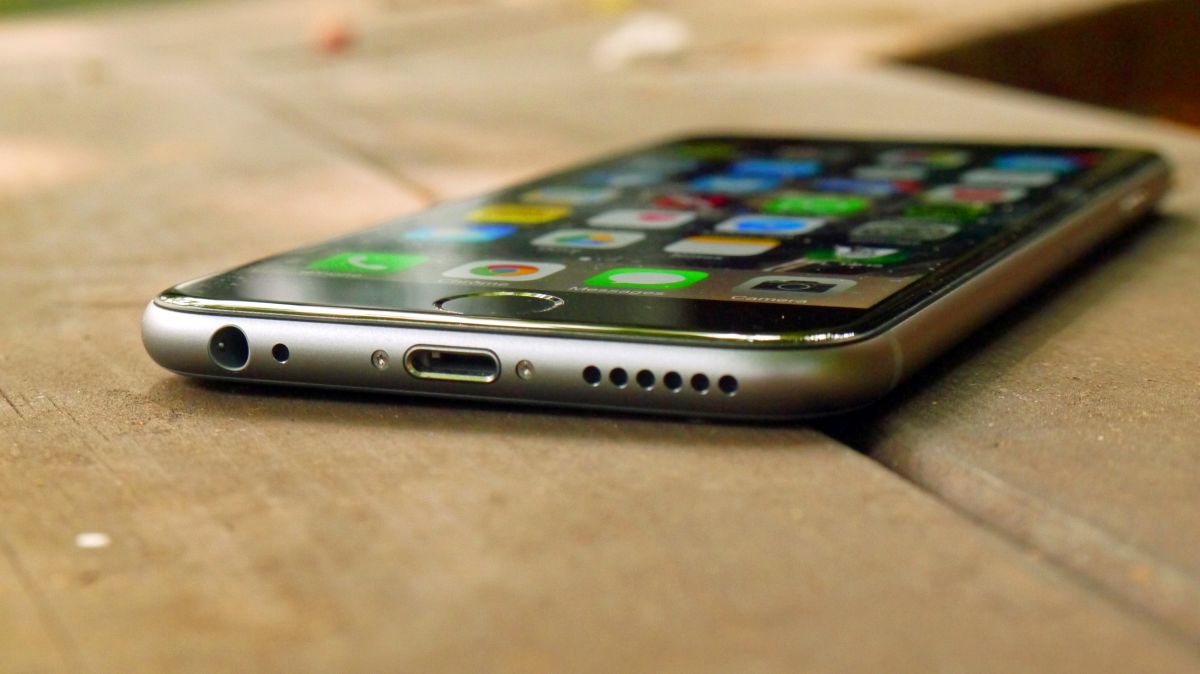
Introduction and design
Update: iPhone 6 is still being sold and it’s on the iOS 10 update roadmap for September. This review has been revised to account for the new software and the release of the iPhone SE.
Why do we have the Apple iPhone 6? Well, back in 2013, despite record sales, the Cupertino brand was heading for a fall. The brand had been trading on the same phone for four years, and something big was needed to keep it current.
So with that, the iPhone 6, and its bigger brother, the iPhone 6 Plus, were born to keep Apple at the sharp end of a market that was starting to lust after powerful, big-screen smartphones with clever and premium design.
The iPhone 6 certainly addresses a number of the problems Apple had developed, coming with a much larger screen (although not dramatically increasing the size of the phone) a boosted processor, better camera, improved battery and, crucially, overhauled design. Much of the ground work that went into the iPhone 6S was done here, with the iPhone 6.
This is the sixth iPhone I’ve reviewed, and there’s a distinct sense that this one is really rather different.
I wrote in 2013 that Apple was becoming more aware that the time when it could define what consumers would buy in the smartphone was ending – and with the 4.7-inch screen, it clearly had to admit defeat in the smaller screen market.
There will be some who will miss that 4-inch screen size, maintaining that they don’t want a bigger display on their phone – but nearly all of those people won’t have spent any appreciable time with a larger device, and I believe that a good portion of you thinking you need a smaller phone will quickly come to appreciate the power a bigger handset brings, without compromising quality.
Apple’s now appeased those longing for a new 4-inch handheld though, with the launch of the iPhone SE. It sports the specs of the iPhone 6S, uses the body of the now-discontinued iPhone 5S and sports a lower price tag than the iPhone 6, giving the latter some tough new competition.

But while the iPhone 6 has answered a lot of the problems I’ve had with previous iterations of Apple’s handsets, there are some issues that still swirled when I handled the phone for the first time – and many of them persist even now that the iPhone 6 has been superseded.
Why did Apple decide to not join the masses with a really high-res screen? Why is the iPhone 6 still one of the most expensive phones on the market? Has Apple done enough to improve the quite dire battery life of previous models, especially at a time when many high-end Android phones are easily chugging through a day’s hard use without thirsting for a charger’s caress?
Let’s take a quick look at the price – and it’s not pretty.
At launch you were looking at $649 or £539 for the 16GB version, $750 or £619 for the 64GB option and $850 or £699 for the 128GB model.
That’s since dropped to US$549 (£459, AU$929) for the 16GB version and US$649 (£539, AU$1,079) for the 64GB option, with the 128GB handset having been discontinued with the arrival of the iPhone 6S.
That’s about as much as you’d pay for a brand new Android flagship just a few months after launch, yet the iPhone 6 is no longer the top model in its range.
Then you’ve got the iPhone SE which has the same features as the newer iPhone 6S for $150 (£100, AU$250) less than the iPhone 6. You’ll have to compromise on screen size, but you could get a better phone for less. Don’t forget, the iPhone 7 is rumored to be on its way in September, too.

Design
Let’s take a look at the first thing most people will wonder about before picking up the iPhone 6: how will it actually feel in the hand?
This is a big departure for Apple, marking a time when it’s admitted that the industrial, sharp design of the last four iPhone models is a little outdated and needs to up the ergonomics to really compete.
Well, with the Apple iPhone 6 we’re looking at one of the thinnest and sleekest handsets in the market – still. It’s got a strong combination of metal back (which feels exceptionally premium, borrowing bucketloads of design language from the iPad Air) and the way the screen curves into the chassis gives it a slight lozenge feel.

The iPhone 6 looks the business, and at 6.9mm thin it’s very nice to hold, though the Samsung Galaxy S6 has since edged it out at 6.8mm thick. I do still feel that phones that push harder on ergonomics are a better choice though – the HTC One M9 bows out at the back and fits in the palm a little better – but that’s quibbling. This iPhone just feels really well made.
Apple has always favoured a flatter phone than the rest of the market though, and placed on a desk it looks great. It does feel great in the hand too, but as said others impress more if I’m being hyper-critical.
There’s also the issue of the large plastic strips that flow through the top and bottom of the device. Given metal is a nightmare material to try and get radio signal to penetrate, these are clearly there to offset that.

While the plastic does seem to give good signal performance for the most part, it’s nothing amazing, and to my eyes they’re a little unsightly and ruin the sleek back of the iPhone 6; their presence seems at odds with Apple’s design ethos.
The other big design change is to the power button, which has now been moved to the right-hand side of the phone. This makes a lot of sense and, given the phone is now a larger device at 138.1 x 67 x 6.9mm, hitting the top of the handset is a much harder task, so moving the button is the right thing to do.
Like the rest of the exterior buttons, the power key is raised and easy to hit in both left and right hand modes. It’s metallic, and crucially doesn’t have the same rattle that I criticised on the iPhone 5S.

However, that doesn’t mean the metallic keys don’t have a little wiggle to them. Running your hand up and down the sides idly will result in you noticing a very slight looseness to the power and volume buttons… I’m in danger of being too critical here, but for the price it’s not the sort of thing I expect to see.
The other important design change here is the camera now protrudes slightly on the rear of the phone. It’s good to see that happening, as it shows that Apple isn’t willing to compromise on camera quality in order to just whack in a thinner phone.
The protrusion is a little worrying in that laying the Apple iPhone 6 down flat on a table could see scratches appearing, but the sapphire glass that covers the lens should ensure that’s pretty safe.
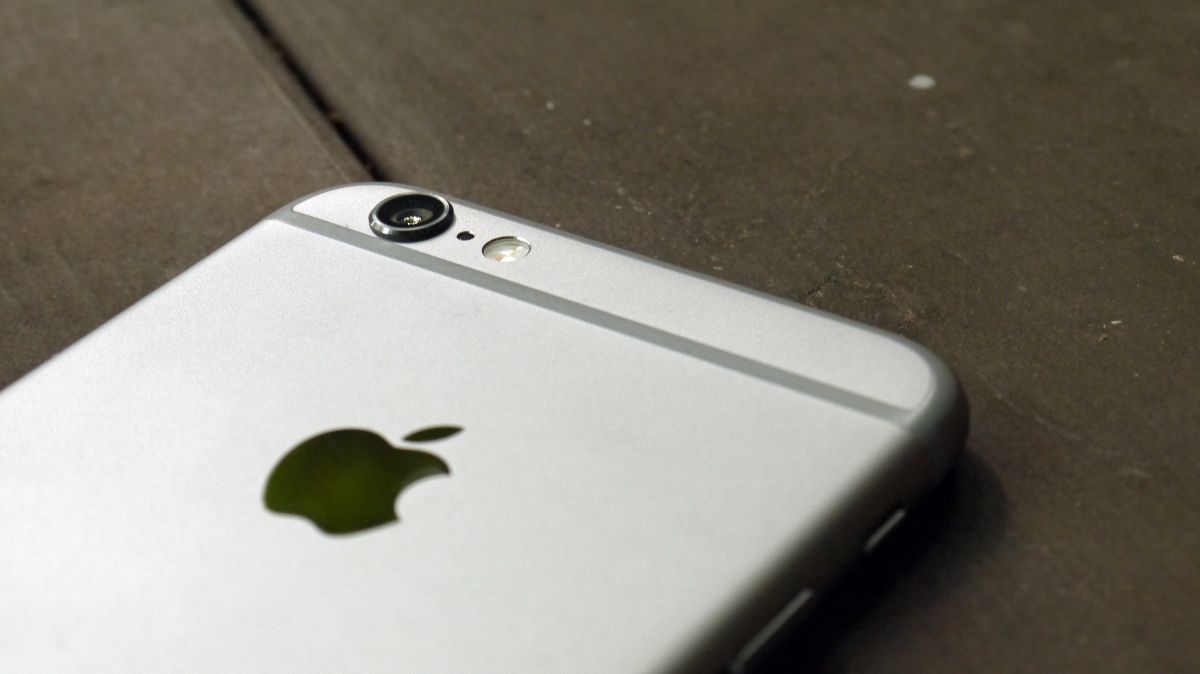
The rest of the iPhone 6 is very similar to the iPhone 5S, with the speakers at the bottom flanking the Lightning port. Well, I say speakers: it’s just the one speaker, but thanks to the slightly elongated bottom of the phone you won’t cover it when holding the phone in landscape orientation.
This was irritating when trying to game or watch a movie without headphones on older iPhones – but this upgrade, combined with the lightness of the iPhone 6, means you won’t have a similar problem for the most part, as the hands sit lower and free of the speaker generally.
Sadly the headphone port still resides at the bottom of the iPhone 6, meaning you’ll still probably get your phone out of your pocket the wrong way around when listening to music.

Going back to the iPhone 6 after a prolonged spell using the iPhone 6S as a daily driver, it’s remarkable how much lighter the older phone feels in the hand. You can feel every one of those extra 14 grams, and it’s the one area in which the newer iPhone suffers by comparison.
Let me make one thing very clear though: the Apple iPhone 6 is another iconic handset in terms of design for Apple. It’s not the best looking on the market (I’m still giving that title to the HTC One M9), but it’s definitely right up there, and for the price I’d expect nothing less.
You can pick up the iPhone 6 in Space Gray (the colour I’ve had on test here), or the more standard Silver. There’s no longer a Gold model available, and nor do you get access to the snazzy Rose Gold colour option that debuted with the iPhone 6S.
Key features
The important features of the Apple iPhone 6 are hard to list. On the one hand there are so many of them that I don’t really know where to start, but on the other hand the iPhone 6 is very much an iteration of a long line of Apple smartphones, and shares a lot of features with previous smartphones.
However, there are some standout additions that I want to talk about.
Screen
The screen of the iPhone 6 is definitely an upgrade from before – you can’t increase the size, resolution, colour reproduction and power efficiency without calling it an improvement.
The resolution on offer is 1334 x 750, which is a change from the 1136 x 640 resolution of previous iPhones. Thanks to being increased to 4.7 inches though it’s still 326 PPI, which means you’ll get a very familiar experience visually.
My technology reviewer hat wants to criticise Apple for not going Full HD with the display here, let alone QHD like the Samsung Galaxy S6, but when I first picked up the iPhone 6 I wasn’t sure if it was a real or dummy device, such was the closeness of the display to the glass.
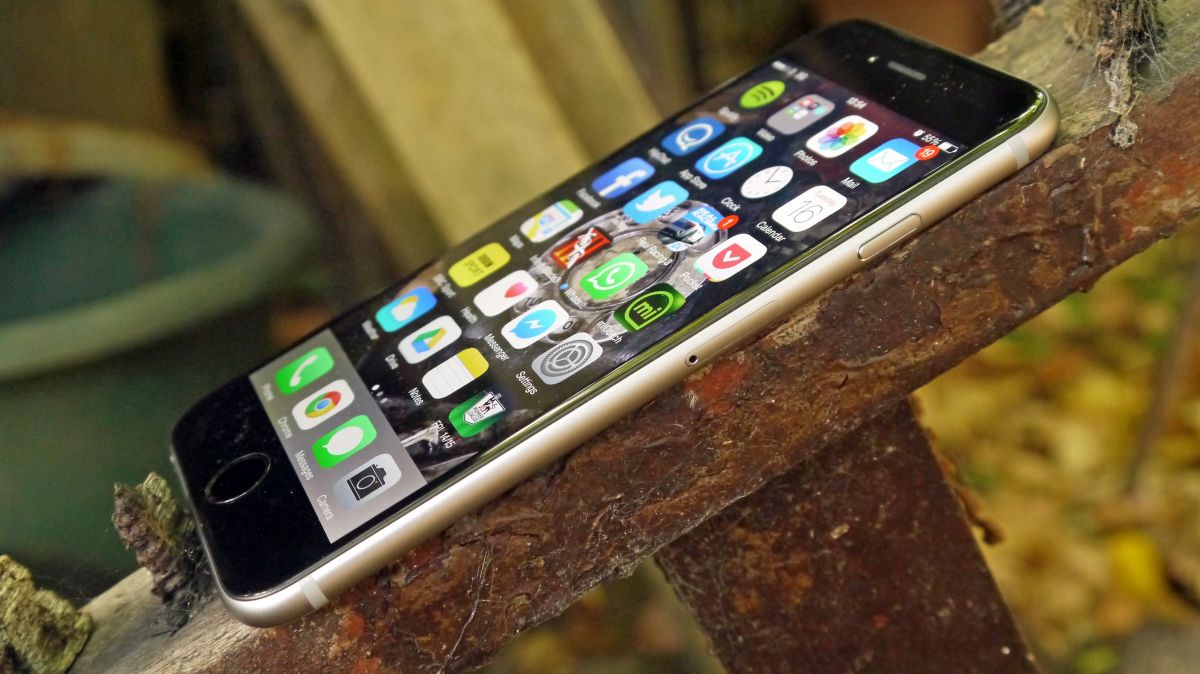
The improved contrast ratio (the difference between the deepest blacks and the whitest whites) is really something to behold, and the colour reproduction is very impressive too. It’s not in the same league as the Samsung Galaxy S6’s Super AMOLED screen, but then again a lot of people feel that screen is too saturated in colour.
It’s worth noting that Apple has pretty much stuck with the exact same screen for the iPhone 6S. The latest iPhone might have 3D Touch pressure-sensing technology stashed within, but the picture is nigh-on identical to its predecessor. In that sense, the iPhone 6 screen remains as good as it gets at this size.
In terms of a more scientific approach, DisplayMate has conducted in-depth tests of the iPhone 6 and iPhone 6 Plus displays, comparing them to the smaller previous model – and there’s good news and bad news here for prospective iPhone 6 buyers.
The good news is that the iPhone 6 is a big step forward on the iPhone 5S. The screen is more correct when it comes to colour reproduction, and as mentioned the contrast ratio (which is important for the more atmospheric movies) is improved, as I noticed in the original techradar tests.
However, here’s the bad news: the iPhone 6 Plus has a much better screen. This is mostly due to the resolution, with DisplayMate noting at the time that the Plus has “the Best Performing LCD that we have ever tested”.
In short, the findings corroborated our own. The iPhone 6 hits the marks when it comes to day to day use, but if you’re after better resolution, brightness or more intense colour reproduction, there are better options on the market, with better tech.
As such, I’m not going to give Apple a pass here for that lower-resolution screen. Why are we looking at what is essentially a 720p screen when as far back as 2013 we were seeing smartphones using a Full HD display at the same size?
Okay, so arguments can be made that it saves battery, and that the increase in sharpness is imperceptible at this size. And they’re not incorrect statements. It’s a great-looking display, and if you’ve got fewer pixels to drive then the battery will hold out longer.
Rivals such as the now-defunct Samsung Galaxy Alpha and the Sony Xperia Z5 Compact both offer similar dimensions, and are also at the same resolution, meaning there’s been some of the same thinking here by other brands in terms of the lower pixel density.
But there’s a cost reduction associated – the Z5 Compact in particular – where Apple is sitting pretty at the top of the pile when it comes to price.
The difference in sharpness is visible when the iPhone 6 is held next to a 1080p device, let alone a QHD one. Something like the HTC One M9 or Samsung Galaxy S5 has sharper, crisper text, and the movie-watching experience is definitely superior.
You might argue that people won’t compare the Apple iPhone 6 with a Full HD display, but of course they will: the iPhone 6 Plus has one, and most people will hold both in their hands before deciding which to choose.
I wouldn’t disparage a phone for not having the best spec if it wasn’t warranted, but for Apple to launch a flagship without packing the best screen technology possible seems a little unfair.
There’s a clear lack of clarity in the crispness of the text and images, especially when browsing the web, and while you probably won’t miss it much when solely using the iPhone thanks to the enhanced screen technology, I can’t see a reason for Apple not sticking in an amazing screen here.
This issue has arguably only gotten worse with the iPhone 6S, but let’s not kid ourselves – it was a big enough drag with the launch of the iPhone 6.
Battery life or design can be the only real problem here – and if it’s the former, then Apple should be having a long, hard look at its OS to find out why it can’t handle a Full HD screen when competitors were managing it ages ago, and are now moving on to QHD displays.
If it’s the latter, then the thickness could have easily been increased by a millimetre to accommodate, and it wouldn’t have bothered anyone – just look at the 2mm-thicker iPhone 6S for evidence of that.
Camera upgrades
I’ll be giving this a lot more focus (I thank you) later on in the review, but for now it’s important to really see what Apple is offering from a top-level perspective given that it’s stuck once more with an 8MP sensor.
This is a bold move in my eyes when rivals like Samsung and Sony are pushing harder and harder with improved megapixel counts, almost hitting 21MP. So, on the face of it, it seems that Apple was woefully behind the competition, even at the time of the iPhone 6’s launch in late 2014.
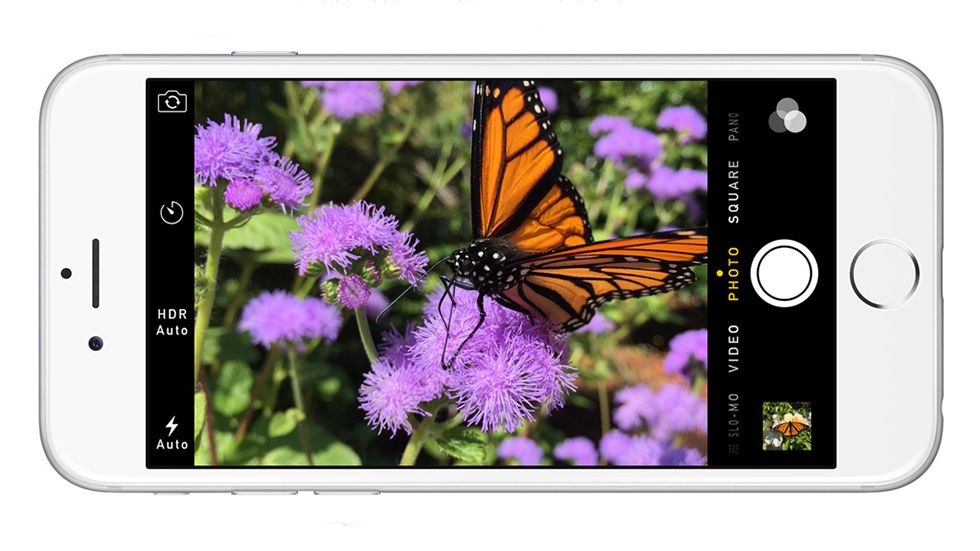
However, regular readers will know that I’m firmly in the camp of quality over megapixel numbers, and while the rivals’ snappers are very good indeed, there’s no reason to think that decent pictures can’t be grabbed from even a 5MP sensor – after all, that’s still good enough to fill a Full HD TV.
So what’s Apple done here? Well, the main talking point is Focus Pixels, additional elements that work out where light is actually coming from, so they can provide directional information to the camera to focus more quickly.
This, combined with the lower MP count (which makes the task of taking a photo less onerous for the sensor) improves snapping speed.
However, that’s in theory. I didn’t notice anything particularly speedy in taking rapid pictures (not counting burst mode) but the additional time did seem to result in well-focused pictures.
Apple’s still got the Auto HDR mode on offer here as well, which means a larger selection of your photos will look better naturally. There are also new camera modes to play with, with HD panoramas and a new timelapse feature that’s integrated into the app itself.
I feel annoyed at myself for getting excited about the new timelapse feature, testing it out the first day I got my hands on the phone – in reality, it’s been on offer for a long time through standalone apps in the App Store, so it shouldn’t be something to be lauded.
It’s okay as a feature too. I can’t see when you’d really need it, and you do need to keep the phone plugged in and ideally on a tripod, but it’s not a bad thing to have, and performs well if you’ve always wondered what the dawn breaking outside your bedroom window looks like (spoiler: it’s pitch black for most of it).
It should be pointed out that the iPhone 6 doesn’t get the new Live Photos feature introduced with the iPhone 6S, even with the shift to iOS 9. I can’t say I’m too bothered though – Apple’s automated three-second videos have proven to be a nice gimmick, but nothing more at this stage.
The other element that’s been improved on the iPhone 6 camera is the video: Slo-Mo now can pump out 240 frames per second for smoother super-slow movies, and 1080p standard video is now shot at a very smooth 60fps.
Both of these upgrades actually give that ‘hyper real’ effect that some movies have exhibited at your local multiplex in recent years (there’s the Hobbit films, and, er…) and while I really like the way it looks on the phone screen, there will be some that think it’s too much.
I’d agree with that for a cinematic shot, but for home videos I think it really adds a touch of class.
Facetime HD camera
The smartphone self-portrait craze shows no signs of going anywhere, and Apple has joined the contest to make people think it has made the ultimate ‘selfie’ phone.
It makes me sadder every time I write that word.
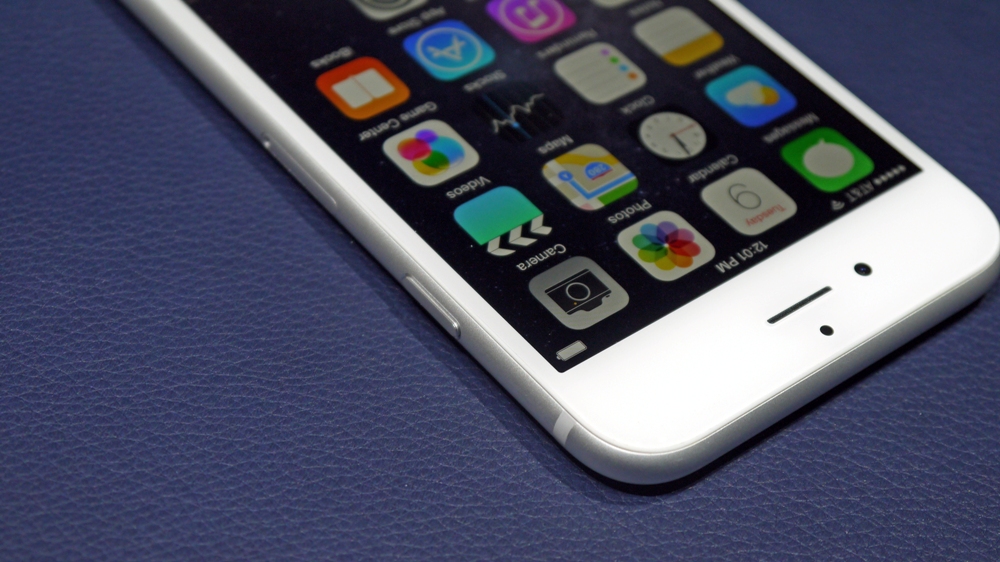
Again, I’ll dig further into this new feature later in the review, but it’s definitely a much better front-facing camera, and comes with the features I’d be looking for if I was into taking loads of photos of my face.
For instance, the f/2.2 aperture ratio of the 1.2MP camera is pretty darn good, and helps to capture good photos in low light. On top of that you’ve got an HDR mode for snaps and video, which appears to fire automatically, as there’s no option to toggle it from within the app itself.
And there are the lovely pre-shot filters to have a look at as well, so if taking a picture of yourself isn’t enough, you can always make it look weirder.
However, it’s not got the resolution power of some of the other handsets on the market – the HTC One M9, for instance, has a much better front-facing camera, and the Samsung Galaxy Note 4 even incorporates a panorama mode for the self-portrait lovers.
I’m not saying this is critical technology, but if you’re one to buy a phone for the pictures you can take of yourself, there are better options out there.
Apple Watch
Okay, it’s not really a key feature, as the Watch is basically just another screen for a device that’s already a bit smaller than what’s on the market.
But the iPhone 6 was the first device to actively tie in with the Apple Watch, and with the launch of iOS 8.2 you’ve had the Watch app on your phone whether you like it or not.
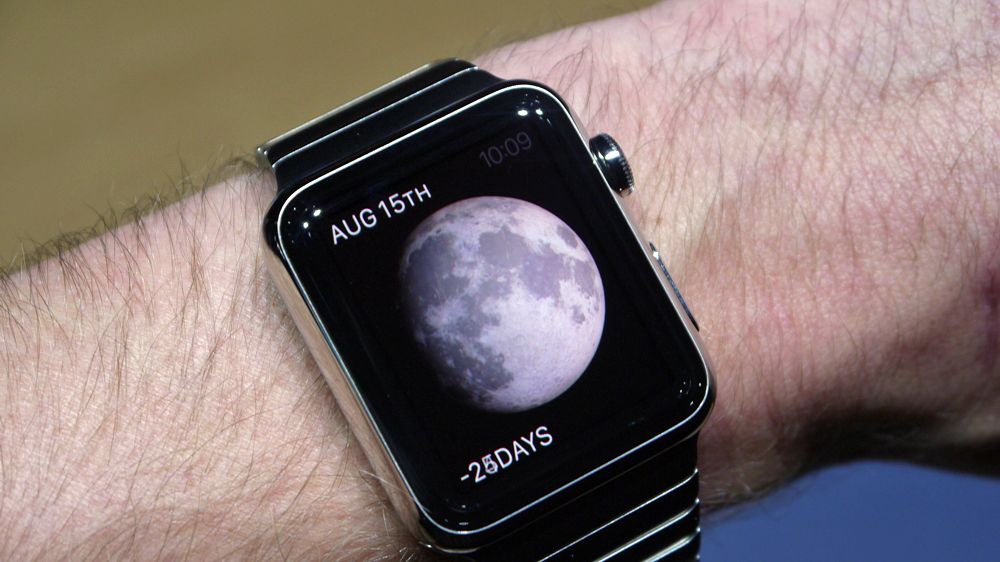
At least U2 didn’t come around to your house to announce that one.
The Apple Watch isn’t cheap though, as prices range from $350 (£299, AU$499) for the entry-level Sport model to $17,000 (£13,500, AU$24,000) for the top-tier 18-karat gold editions.
The Watch also really needs to be paired with the iPhone 6 or later for the best experience, with the GPS added into the mix when running, as it’s not present on the wrist-dweller.
The Apple Watch isn’t an essential accessory, but if you’re desperate for a smartwatch it shouldn’t disappoint. It’s stylish, and it gives you easier access to your notifications – if you’re a compulsive smartphone-checker it could help rid you of your addiction.
Apple Pay, M8 co-processor and improved keyboard
The M7 co-processor didn’t really seem to do a lot in the iPhone 5S, but in the iPhone 6 things seem to be stepped up somewhat.
Developers have started making better use of the functionality this low-power sensor-watcher brings. Nike, for instance, uses it to generate its Fuel Points now that its own Fuelband wearable is dead).
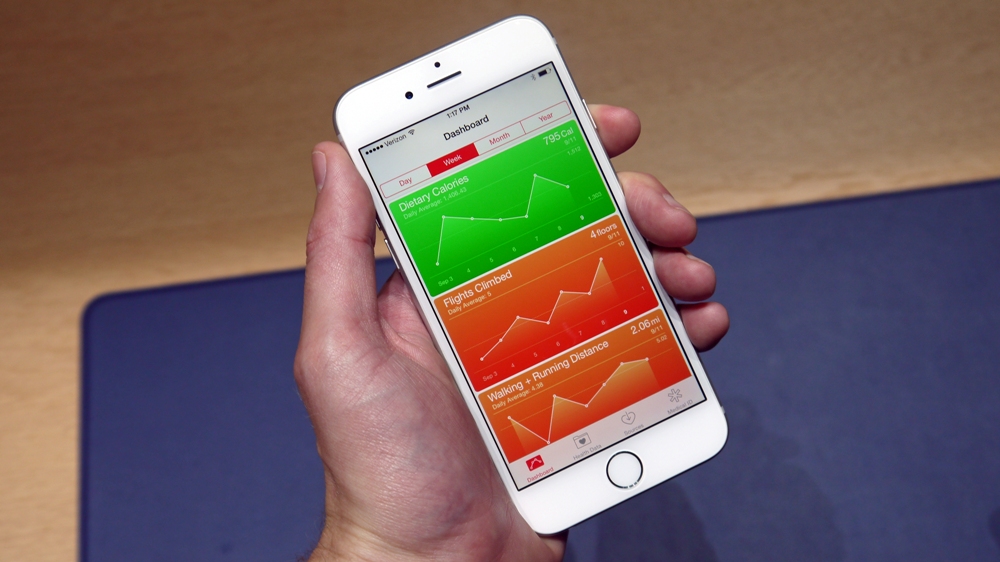
On top of that, the Health app makes good use of the additional data: with the added barometer on board the iPhone 6, the app will show you how many flights of stairs you’ve climbed along with the boring info of how many steps you’ve taken that day.
The Health App itself is rather confusing, as you need to set the dashboard up with the information you want to see in graph form (for instance, distance and steps climbed) rather than it appear on start-up.
When you go to select new items to display from the list there are seemingly hundreds, with things like ‘Vitamin B’ intake looking really interesting; in reality though they’re useless without external sensors.
In truth, it’s with the iPhone 6S that Apple really took its M co-processor to the next useful level, fitting it onto the SoC so that it could save power on core tracking tasks and also remain ‘always-on’. This enables it to do things like listen out for Hey Siri commands even when not plugged in. But the iPhone 6’s M8 is otherwise useful when actively using the phone.
Touch ID / Apple Pay
According to Apple’s literature, Touch ID has been unchanged as a technology in the iPhone 6 from the previous model. My initial feeling was that it definitely feels better and more accurate than on the iPhone 5S, as I had barely any mis-reads where with the older phone a good 25% were failing.
It seems as if Apple has at least improved the software here. Again, though, it’s with the iPhone 6S that Apple has truly made meaningful internal progress, with new Touch ID hardware and software algorithms helping the system take a noticeable step forward in terms of responsiveness and accuracy.
Still, Touch ID on the iPhone 6 remains one of the best biometric sensors around, despite rivals such as the Samsung Galaxy S6 and Nexus 5X having caught up since its release. With the commerce angle added, it’s one of the best inventions on any smartphone.
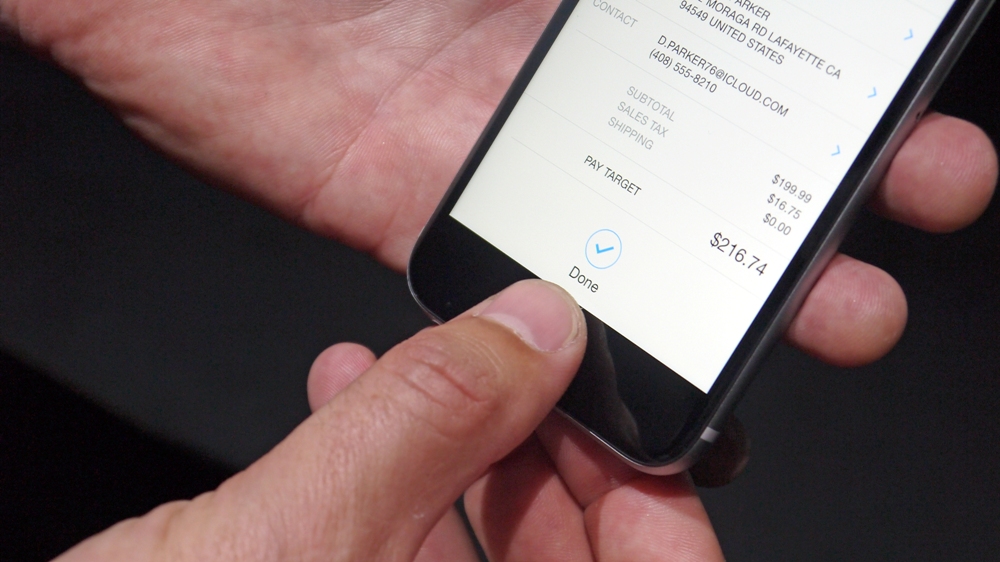
Apple Pay puts Touch ID to even better use on the iPhone 6 than on its predecessor, and the mobile payments system is up and running across a number of US and European financial institutions.
More importantly, if you’re a charge-happy consumer, it works with the three major credit card companies – Visa, Mastercard and American Express – and millions of point-of-sale retailers throughout the US and Europe. In January 2016 it was revealed that the total number of retailers supporting Apple Pay had passed the two million mark.
Walgreens, Subway and McDonald’s were some of the early big-hitters to get onboard (with loads of others now joining the party, including even vending machines), while holdouts like Walmart and CVS have balked at iPhone-linked payments.
Apple Pay has since launched in the UK, with American Express, First Direct, HSBC, Halifax, Lloyds Bank, NatWest, NationWide, MBNA, Royal Bank of Scotland, Santander and Ulster all among the financial institutions supporting it; Barclays was the only major bank to hang back, and it’s joining soon.
Apple’s official partner stores include Lidl, M&S, Post Office, Liberty, McDonalds, Boots, Costa, Waitrose, M&S Simply Food, Pret, BP, Subway, Wagamama, Spar, KFC, Nando’s, New Look, Starbucks, Dune and JD Sports, and more are being added all the time.
The thing Apple isn’t being clear about is that you can use Apple Pay with any contactless terminal, no matter what shop you’re in. It’s a strange one, but you can learn how to set it up here.
Despite this frustrating, consumer-unfriendly adoption resistance, everything else about the Apple Pay feature is easy, from scanning cards with the rear camera to authenticating payments with Touch ID.
In fact, the only problem I encountered using Apple Pay was cashiers knowing what it was. Asking to order a McDonald’s “Apple Pie with Apple Pay” drew some confused looks on day one.

Apple Pay is an extension of Passbook, so waving the iPhone 6 over a store’s NFC terminal automatically fetches your lead credit card, and from there it requires your fingerprint to put the transaction through.
The combination of NFC and Touch ID could eliminate all-too-common card reading errors, credit card skimmer vulnerabilities and lost or stolen debit cards.
This is a BIG draw for Apple, as Apple Pay is much more vertically integrated than most rival contactless payment systems, and therefore simpler to use.
Samsung launched Samsung Pay with the release of the Samsung Galaxy S6, of course, but it’s not as widespread as Apple Pay. What’s more, the South Korean company simply doesn’t hold the same level of cachet or sway with western companies as Apple, so it’s going to be hard for it to make inroads, despite Samsung Pay actually sporting the more innovative and flexible payment technology.
Further out, there’s also talk that the NFC chip in the iPhone 6 and 6 Plus, used to enable the payments, could be extended further to enable you to pair the phone with Bluetooth speakers, etc, like on Android phones… but for now, it’s payment only.
Better keyboard
This should really be in the ‘Essentials’ part of the review, but I wanted to mention it here as it’s fixed one of the biggest problems I have with the iPhone in general.
The iPhone 5S and its predecessors are awful for messaging. Whether it’s the tiny display, the cramped and inaccurate keyboard or the way it keeps shutting down if you accidentally press above the top row, it makes me want to throw the phone out of a window.

From the Apple iPhone 6 onwards I’ve really been enjoying the wider key spread (thanks to the larger screen, obviously), the improved prediction engine and the general ease of use.
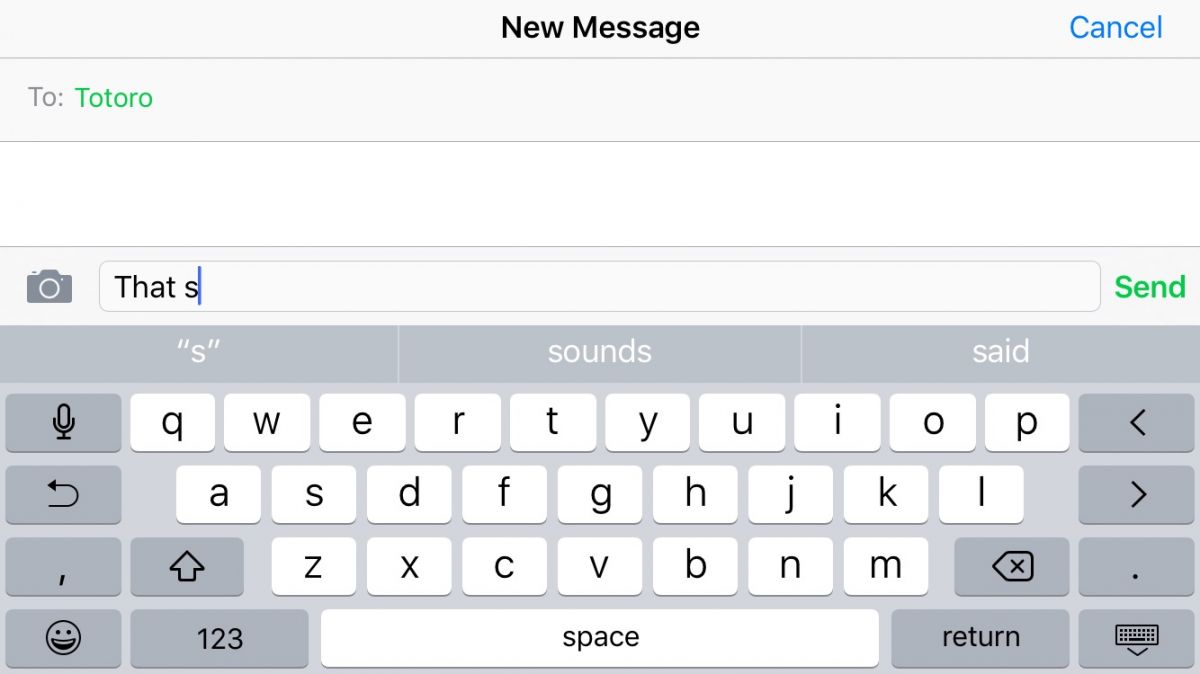
Add to that the fact that Apple now lets you download other keyboards (such as Swiftkey), and the messaging experience definitely gets a tick in my book these days.
iCloud Drive, Continuity and Family Sharing
A bit of a catch-all here, but it’s worth noting that the new cloud-based features of iOS 8 (and which are still present in iOS 10) work really nicely on the iPhone 6. The ability to share files from a drive, the handover between Mac and iPhone and the way you can now have the entire family locked into one account is a real nice touch.
The latter particularly impresses me, as although it’s not perfect in terms of being able to offer different credit card information (which would be ace if you’ve got a house that has more than one adult with money, but you don’t want to allow everyone to use your card) the fact is even non-families can benefit from being part of the same network.
Today’s media is widely shared with those we trust, and being able to have close friends as part of a family network feels like a real step forward.
iOS 9 added the welcome option to add a standalone iCloud Drive app to the home screen, which provides quick access to all the files you have stored in Apple’s cloud service. It’s made iCloud feel like a far more tangible, front-and-centre service on mobile, falling more in line with how it operates on OS X.
And while iCloud Drive feels a little too similar to Google’s iteration in many ways, the integration is great and the fact that large files will live there as a link to anyone (thus negating Dropbox in many ways, and more seamlessly than ever) means the iPhone 6 feels like a very smart phone indeed.
OH I GET IT. Smart phone. Smartphone!
iOS 8/9 and performance
The interface of the iPhone 6, despite launching with iOS 8 and subsequently shifting to iOS 9, is still very familiar for anyone who’s used a smaller iPhone or an iPad over the last several years. With the iPhone 6 you’ve actually got another option to make the view bigger (or zoomed in) in order to service those that perhaps don’t have the best vision, and don’t want to squint at the larger screen.
iOS 8 also added some very clever UI tweaks here and there, such as the ability to save contacts (with info like phone numbers from the signature) directly from the email app.
Then there’s the ‘Reachability’ option. Double tapping on the home key without pressing it in will make the screen drop down around two-fifths, enabling you to easily press anything at the top of the screen. It’s a slightly messy way of doing things, and despite trying my utmost I could rarely remember to activate it.
Still, at least Apple is showing that it’s still a bit disgruntled at being forced to bring a larger phone to the masses, and is trying to mitigate the problem.
One of the most impressive features introduced by iOS 8 was the ability to swipe back and forth through the OS to get through apps and pages on the web. It’s not a new feature for the average smartphone user at all – it’s got some elements of BB10 (in terms of swiping to get to new menus), and there are more than a few nods to Android in there as well.
But that’s not a bad thing in my mind. As long as a method isn’t patented, then the more you can do to add a feature in to make a user’s experience smoother, the better.
It’s not a completely useful system, as the swipe doesn’t work as a complete back key. To be perfect, I’d have liked to see a swipe backwards on the first screen of an app or web page as a method of getting back to the home screen.
It’s things like that which embed the action into muscle memory, rather than being able to do something when you remember it’s possible. However, it did severely limit the need to press the back button in the bottom left-hand corner (admittedly an improvement over iOS 8’s top left corner), which is a plus.
While iOS 8 introduced all of these new features and more, it’s no longer the most current version of Apple’s mobile OS. In news that will neither shock nor surprise you, the iPhone 6 now ships with (or can be upgraded to) iOS 9 and will soon be upgraded to iOS 10.
This adds the all-new News app, imbues Siri with scary levels of intuition and even upgrades Apple Maps with public transport directions. It’s also now easier to tell whether or not you’re typing in caps, and app download sizes have also been given a trim through a feature called ‘App Thinning’, saving valuable storage space (especially useful if you opt for the wholly inadequate 16GB model).
In fact, iOS 9 itself has received a few updates of its own, many of which benefit the iPhone 6 as much as any of Apple’s newer devices. For example, iOS 9.1 added more than 150 emojis to the keyboard, which has the potential to make your messaging that bit more expressive/obnoxious. Let’s hear it for the taco. Anyone?
The big addition in iOS 9.2, meanwhile, has been Mail Drop. This previously Mac-only feature enables you to send large files through email, making it possible to share them without having to send them to Dropbox (or some other cloud storage solution) first. It’s very well integrated too, so iOS will simply offer you the option of using it any time you try to send a particularly large file.
The latest version to land on the iPhone 6 though is iOS 9.3 which brings with it relatively minor updates to various stock Apple apps and a new feature in Night Shift. This new function is tasked with increasing color temperature as you near bedtime, making the the display warmer and helping you sleep better – or so Apple claims.

Quick contact access and Siri
Another change relates to the quick access to key contacts. In iOS 8, a ‘recent contacts’ bubble gallery was added at the top of the multitasking menu, which as is still accessed through a double press of the home button.
From iOS 9, however, this was added to the new Spotlight Search screen, which is accessed by swiping right from the first home screen. In practice, this grants more space to the multitasking menu, making it easier to dip in and check out details from another app. It also makes sense to lump all of Siri’s constantly shifting suggestions in one section.
However, I dislike features that try and choose these things for you. I’d rather be able to hard-code contacts there, as unpredictability in new features can be infuriating.
As such I didn’t really use this feature that often – but if you remember to swipe right to get to the most used people, then hopefully over time it will populate correctly for you and you’ll end up using it instinctively.
Going back to Siri, Apple’s personal assistant is now proactive, being able to make suggestions of its own, such as appointments you might want to add to your calendar.
Interactive notifications
The other big thing that Apple introduced with iOS 8 and improved in iOS 9 is the interactive notifications and widgets for the main drag-down menu that pervades throughout the app.
The interactive part is, again, nothing new, as it’s something that’s been part of other phones (for example, the LG G3 and G4) for a number of years. However, it’s a very slick and unobtrusive system here, with a small banner appearing at the top of the screen.
Replying to a message instantly is cool, and something that really does bring an element of joy and usability to the system. Other apps can use this method of alert too, but not to the same effect. For instance, Mail coming in will show up in the same banner, but you can only organise the message rather than reply there and then.
I appreciate that emails are generally longer, but there should be the option to fire off a quick missive if the situation calls for it.
The widgets in the Notifications drop-down are pretty cool, particularly now that third-party app developers are incorporating them as standard.
There are now more options available in the notifications bar to make a quick tap all you need to do things on the fly. It’s one of those things that when you notice it for the first time, it’s really useful, but quickly becomes commoditised.
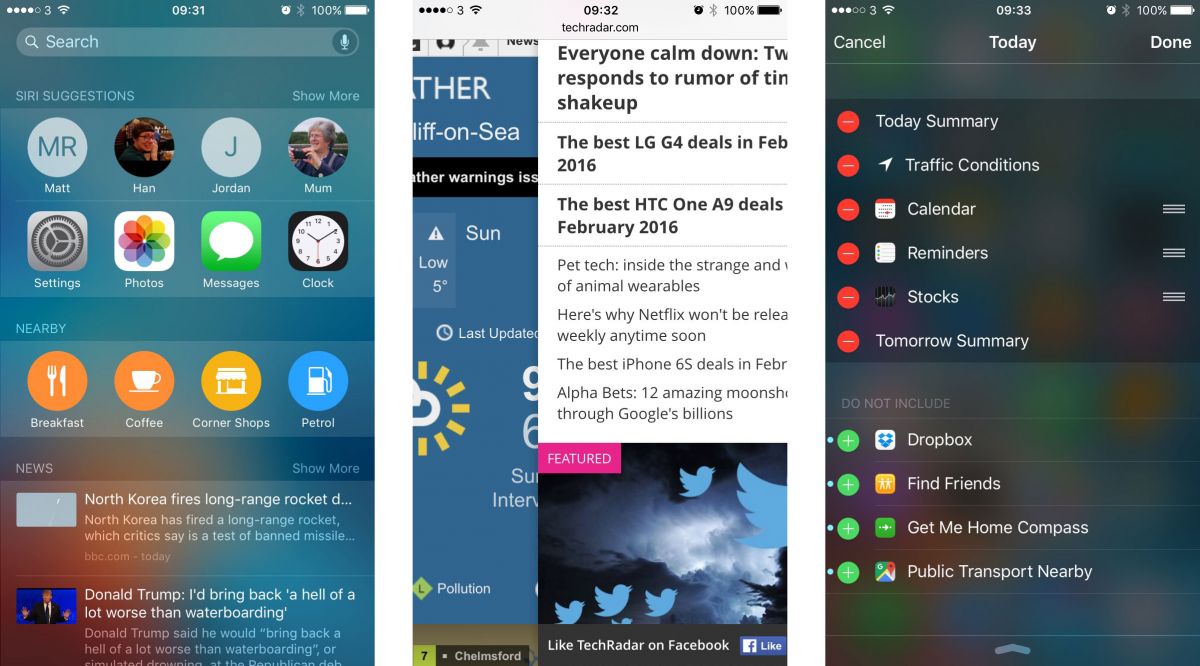
The rest of the interface is much as expected for an iPhone – and that’s a good thing in the eyes of most users. However, I will say that the touchscreen on the iPhone 6 isn’t as good as the competition – it doesn’t feel as responsive as the Project Butter / Project Svelte (and subsequent evolutions) that Android has been adding into the backend of its platform.
The problem manifests itself when swiping laterally through apps, and the internet browser doesn’t always have that super smooth reaction that I’ve come to expect from a modern smartphone.
I’m being really picky here, as it’s not a nuisance, but at the same time it’s perceptible compared to the competition, although nothing out of the ordinary for your average Apple user.
Maybe it’s down to the lower 1GB of RAM Apple has packed in – the 2GB iPhone 6S is one of the most fluid phones around, after all. But although it’s slight, those hopping between Android and iOS might pick up on the lag.
The better news is the crashes that plagued the early iOS 7 devices seem to be pretty much cleared up with the iPhone 6 on iOS 9 – I only noticed Spotify giving up the ghost during my setup, as well as one Facebook crash where before Safari was falling apart all over the place.
Dropbox did hate downloading large files when you moved the phone, but that feels like more of a bug with iOS 8 compatibility than an endemic failure. It all seems to be running well in iOS 9.2.1.
These things are often software-related, of course, but ultimately the iPhone 6 seems more stable out of the box than its predecessor.
The rest of the iPhone 6 interface is simplicity itself. I’m never going to be happy with the way many apps still have their personal settings only available in the general Settings app, but at least more are starting to let you edit functionality from within the app itself.
The iPhone 6 interface is clear, clean and as you’d expect. I still think there’s more to be done with the Notifications area, but at least it’s less complicated than before. Splitting it into two still feels wrong, and the calendar / traffic / summary info seems more power user than standard Apple buyer.
The Control Center at the bottom of any screen is richer than before too, and still gives access to the key areas, including music control from anywhere within the phone.
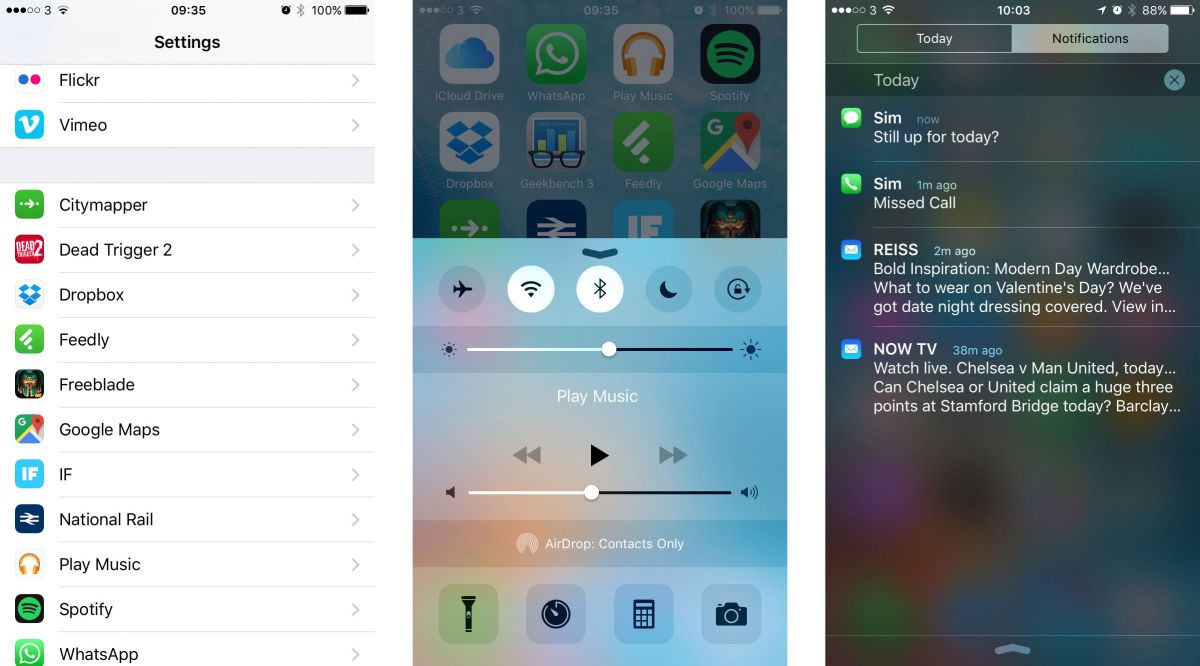
Is it the perfect interface for customisation? No, and many people are starting to want more from their smartphone, which is why Android phones are proving so popular.
But it’s still got the core simplicity that Apple has prided itself upon for years, and that’s still going to be a massive draw, especially for those that feel like ‘they know where they are’ with iPhones.
Performance
Providing the power behind the scenes on the iPhone 6 is a 1.39GHz dual-core A8 processor with 64-bit architecture and 1GB of RAM.
The iPhone 6 seems to be a little bit slicker than the iPhone 6 Plus when it comes to chugging away under the finger, although when looking at the Geekbench 3 scores we can see it’s almost identical (average score of 2905 vs 2911 for the 6 Plus).
This puts it below 2015’s crop of flagship smartphones such as the Samsung Galaxy S6 and HTC One M9, but right with the Samsung Galaxy S5 and below the One M8 – although HTC admitted to slightly gaming the results with a special ‘high power mode’.
In short, despite the dual-core processor, Apple seems to have eked out enough power to make the iPhone 6 a strong enough contender day to day, but if you want more power there’s always the newer iPhone 6S now. Its processor is a good 40% faster than the iPhone 6’s, and you can feel the extra snappiness in general usage.
Battery
The iPhone 6’s stamina promised to be a lot better than that of the iPhone 5S, as it comes with a 25% longer lasting battery and, according to Apple’s literature, the A8 processor at the heart of things is a much more efficient engine, drawing 50% less power than the A7 iteration in the last iPhone.
The good news is battery life in the iPhone 6 is definitely an improvement on what came before, offering a much more stable experience even if you’re not doing much with the phone, which was one of my major gripes with the iPhone 5S.
There’s a notion that what Apple offered with that device was ‘good enough’, according to the owners I spoke to, but all wished that something could be done to make it better.

When informed that 2014’s crop of Android phones, such as the Samsung Galaxy S5 or HTC One M8, were capable of lasting well over a day even on harder usage, most realised that Apple needed to do something to improve the time they could keep away from a charger.
Well, at least that’s happened with the iPhone 6. When it first launched, in average use – by which I mean email being fetched at intervals, the screen at medium brightness, recording a few minutes’ worth of video, snapping seven photos, and an hour or two spent listening to offline tracks on Spotify – I managed to go 13 hours with the battery only dropping to 33%.
From then I played Real Racing 3 for 15 minutes and lost 10% of the battery life, which showed that it’s very easy to slip through power when playing graphically intensive games.
Returning to an iPhone 6 handset that’s been in use for more than a year, I was pleased to find that its stamina remained pretty decent – after 12 hours of light usage it had dropped to just 46%. Of course, iPhones have always been extremely good at not being used much – they truly sip the power when in standby, with the screen powered down.
As was the case earlier in its life, playing 3D games really hit this ‘mature’ iPhone 6’s battery where it hurts. Playing 10 minutes of Freeblade – the graphically-rich shooter Apple used to show off the iPhone 6S at launch – sapped around 15% of the battery’s charge.
Another persistent issue: try and do anything like downloading music (which needs the screen to stay on, as apps like Spotify can’t manage downloading in the background) and the battery will just fall away, meaning you’ll be back to playing the charger hunt game.
It should be noted that this is generally a problem with most smartphones; however, some are more adept at it than others (the fact Android phones can download in the background, for instance, is a great boon).
It’s also worth noting that Apple added a Low Power Mode with iOS 9. Flipping this on manually (you’ll also be granted the option when power hits 20%) reduces things like mail fetch and background app refresh frequency, as well as automatic downloads and iOS’s flashier visual effects.
In truth, this is a feature Apple should really have added some time ago. Still, we’re glad it’s finally here for those times when you’re caught away from a wall socket.
Our techradar battery test did show something slightly worrying, and likely down to the increased pixel count: where the iPhone 5S lost 16% from a looped 90-minute Full HD video, the iPhone 6 lost 26%, with the iPhone 6 Plus dropping a similar 27%. Apple’s extra pixel management clearly isn’t as good as it could be, so anything with the screen on is going to be an issue.
After a few months’ use I found that the battery wasn’t as robust as in other phones, with the iPhone 6 starting to show a worrying tendency to juice down to about 20% at home time. It could have been due to heavier apps being plugged in – running apps seem to want to spend time in the background eating battery – but it’s not something I’ve seen on comparable handsets.
More recently, I put the iPhone 6 through its paces on the aforementioned techradar battery test once again, and found that the average remaining figure had dropped to 67% – quite a deterioration from launch.
In summary though, the battery life of the iPhone 6 is still something I’d call more than adequate, which isn’t a compliment I’d pay previous versions of this phone.
That said, given the lower-res screen and improvement in battery size, I was hoping for something a little more efficient, especially as the iPhone 6 can’t quite compete with other phones on the market at the moment.
It’s not miles behind, but there’s still some work to be done by Apple for the iPhone 7 (the iPhone 6S offers pretty much the same performance from a slightly smaller battery). And especially given that the iPhone 6 Plus and iPhone 6S Plus are so much better at lasting with the screen off (thanks to the much larger power pack), this is going to lead to a tricky decision for prospective buyers.
Camera

As noted above, the camera on the iPhone 6 is an 8MP affair, but with some key upgrades to make it into a more useable device day to day.
The main element is the addition of ‘Focus Pixels’, which Apple believes will give faster autofocus and improved clarity to your shots.
Faster autofocus is something that’s been used to great effect on the LG G4 and the Samsung Galaxy S6, promising to get more of the picture in focus first time out.
The G4 uses frickin’ laser beams to manage the task, so Apple’s got a pretty lofty goal here. However, the iPhone 6 was been found by DxO Labs to be one of the best cameras of its generation, and I instantly found it to be a superior device for general photography compared to contemporary devices like the Sony Xperia Z3 Compact.
We’ve seen better camera performance since, of course – and not just from the 12MP iPhone 6S and cheaper iPhone SE. A better option might be the Galaxy S6, which launched after the iPhone 6 and still has one of the best snappers around.
The rear camera is very similar to that found on the iPhone 5S, it has to be said, although given that was one of the better snappers out there this isn’t necessarily a bad thing.
The Focus Pixels seemed to help somewhat with getting the clearer picture, but I didn’t notice any big jump in functionality compared to the iPhone 5S in that respect. Saying that, I never really thought the 5S was slow to focus, so it’s perhaps an issue that didn’t need solving urgently.
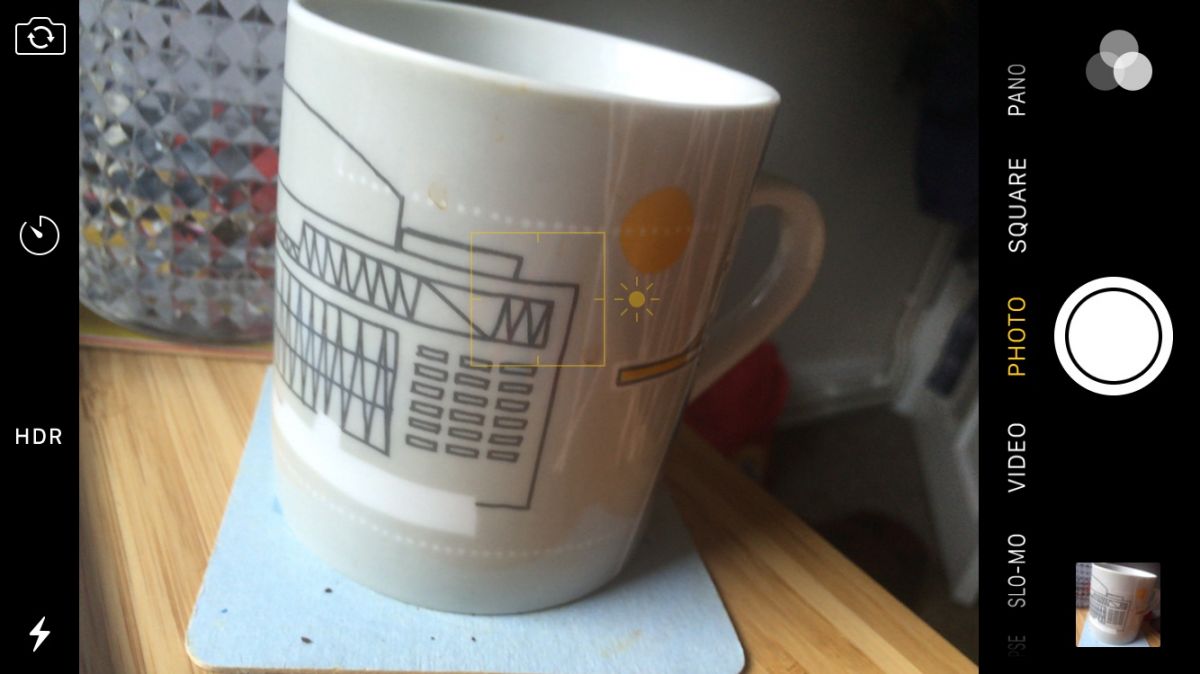
One extra element Apple has added in is the ability to change the exposure of the photo manually. Simply slide your finger up and down the screen to brighten or darken the shot – well, in theory.
In my testing this seemed to be slightly iffy in terms of registering my desired level accurately – you need to swipe up and down a number of times to really change the level (which could be a good thing in some users’ minds, as it allows a fine degree of control) but too often the swiping led to changing the mode from photo to video or other option.

However, the simplicity of the iPhone’s camera mode is still very much in effect: the f/2.2 aperture of the sensor is indeed rather good in terms of capturing colour. HDR mode is set to auto by default, but only really pops in when outside with bright sunlight cascading all around. For the most part, it won’t fire sadly.
The rest of the interface is largely the same: autofocus and autoexposure can be set with a long press, and the only other modes are timer, flash and the use of filters which show how the photo will look in real time,
The front-facing camera, again as noted, is a big improvement for those that like a good self-portrait. The brightness is higher, the camera is an HD option with built in HDR, and essentially it’s now really good for taking photos or video calling a loved one from afar.
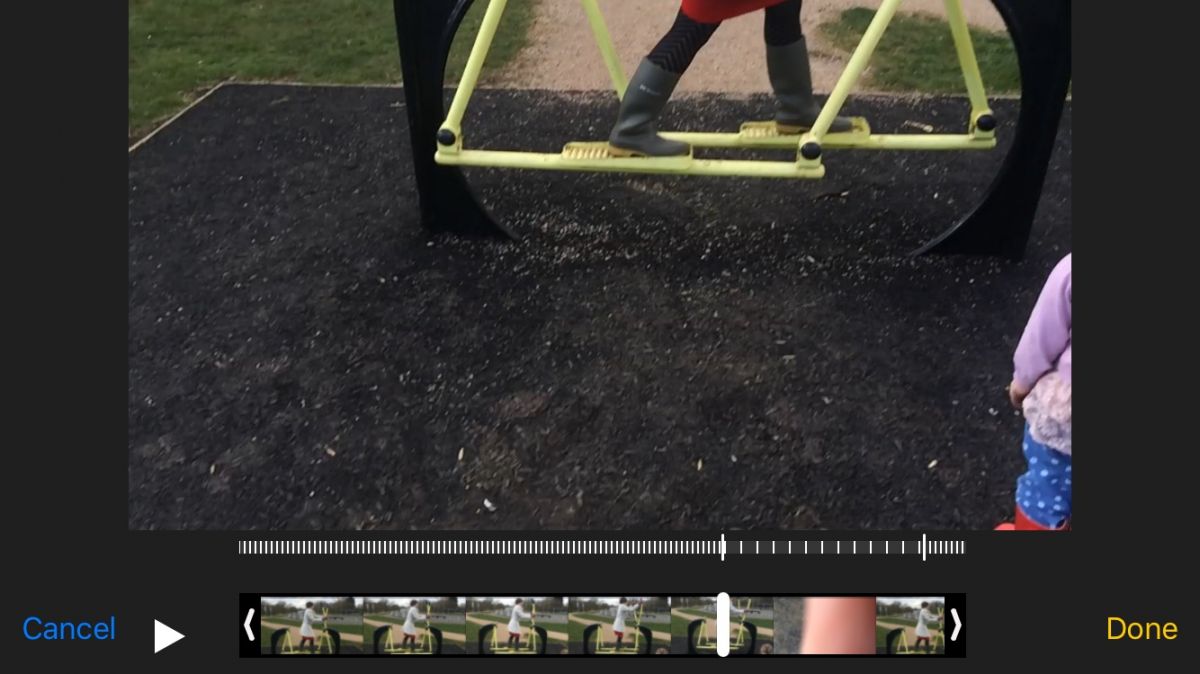
The other benefit here is that now iMessage accepts short videos (as Apple attempts to topple WhatsApp) the improved video capability of the front is more useful than ever before.
I’m a big fan of the Slo-Mo feature on any smartphone, and by Apple increasing it to 240 frames per second you can now get some VERY slow and smooth shots.
This is a really good feature if you’ve ever wanted to see something almost imperceptible to the human eye – by which I mean finding out how stupid your pet looks when shaking its head at high speed.
Other things, like running style, golf swing or how you sneeze are fun reasons to use the function, and while it’s nothing groundbreaking, it’s a slick and easy to use interface. Why you’d want to go back down to 120fps is beyond me, but the option to change it back is there with a tag in the bottom corner.
The video recording function on the iPhone 6 – which now encompasses 1080p at 60fps – is very clear and almost too real. This is actually great for home movies, giving the sense that you’re there, but not so great if you’re a budding movie producer with no money wanting to use the iPhone to make your next movie.
I will say this about Focus Pixels in the video – Apple was making a big song and dance about how you don’t need to refocus video when moving the camera about.
This is partly true, but mostly if you’ve got a really clear and bright scene with well-defined distances. Going into close-up, for instance, didn’t seem to yield much in the way of a decent shot, with the fuzzy bits still needing to be corrected by a tap.
Camera samples








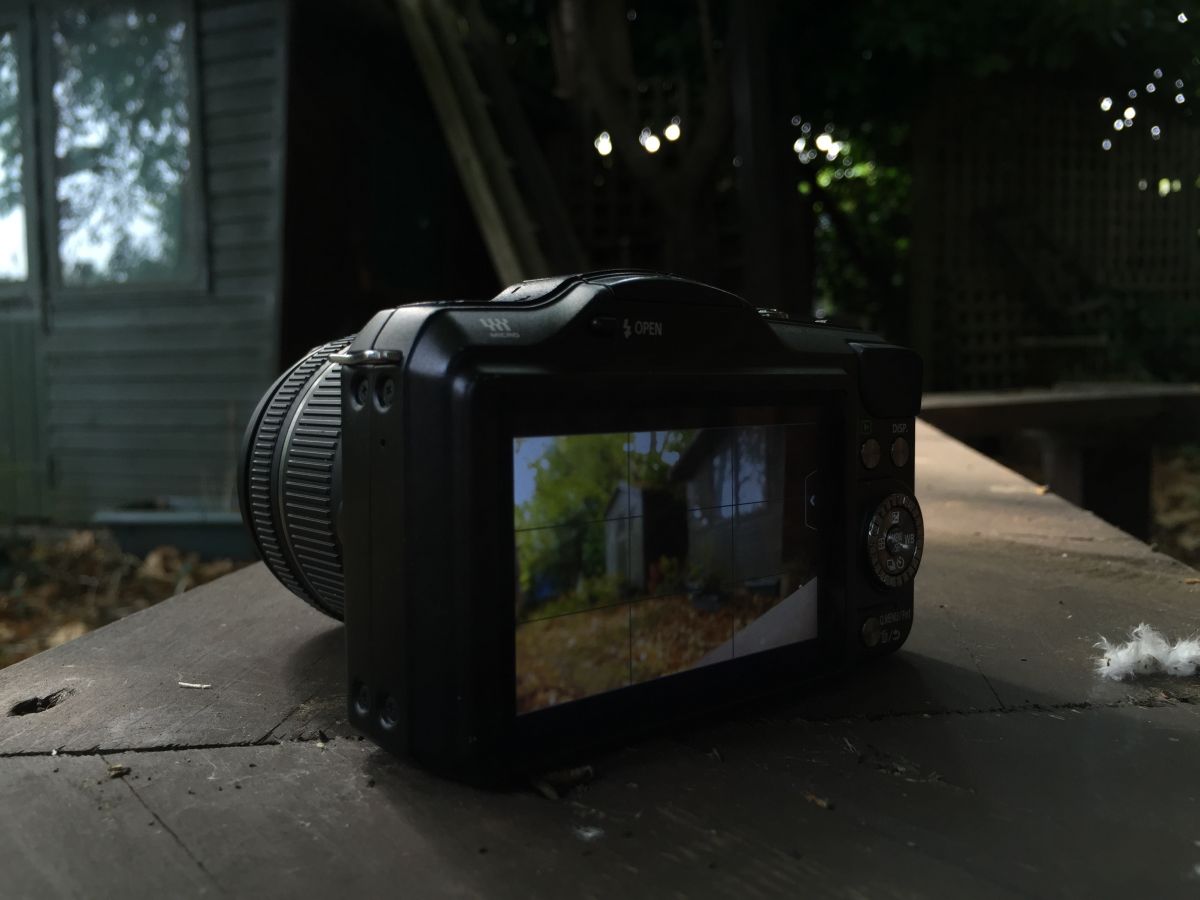

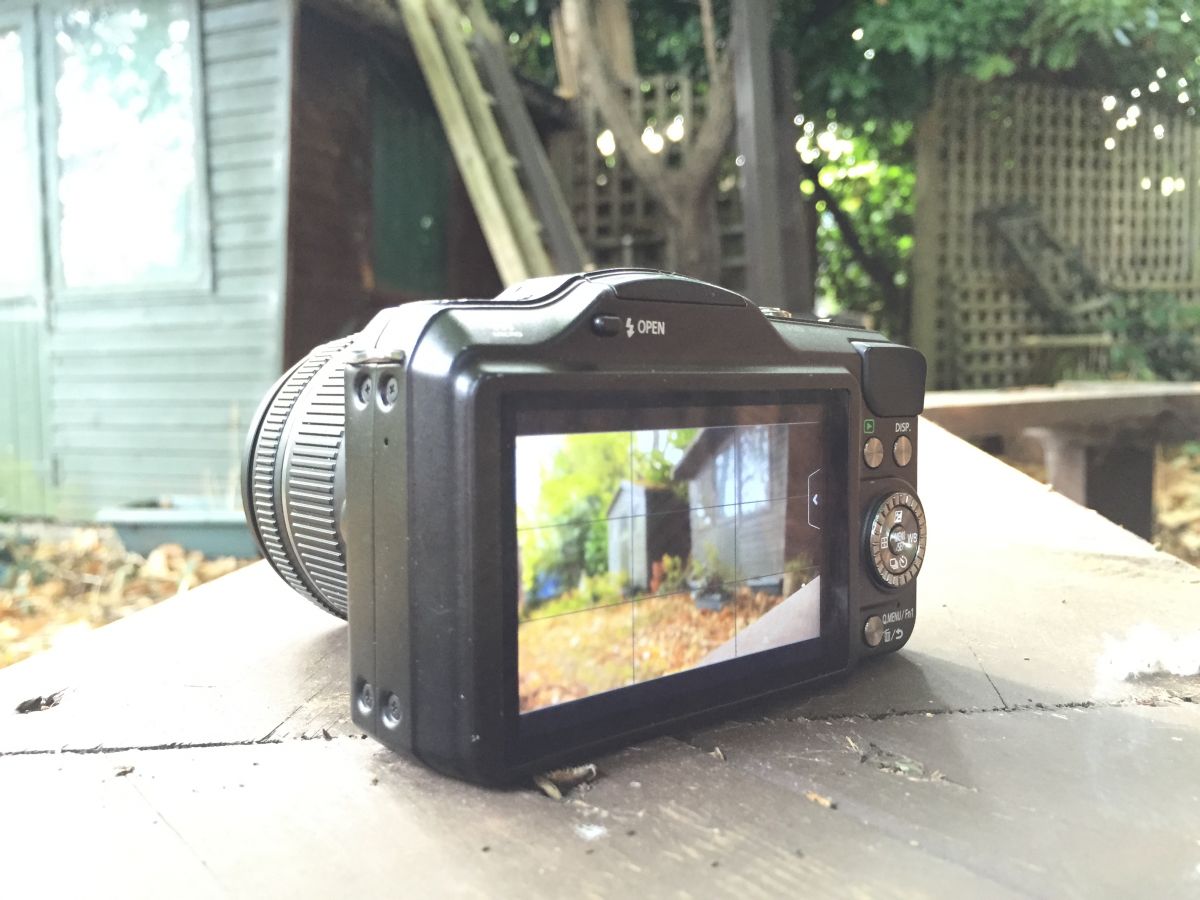
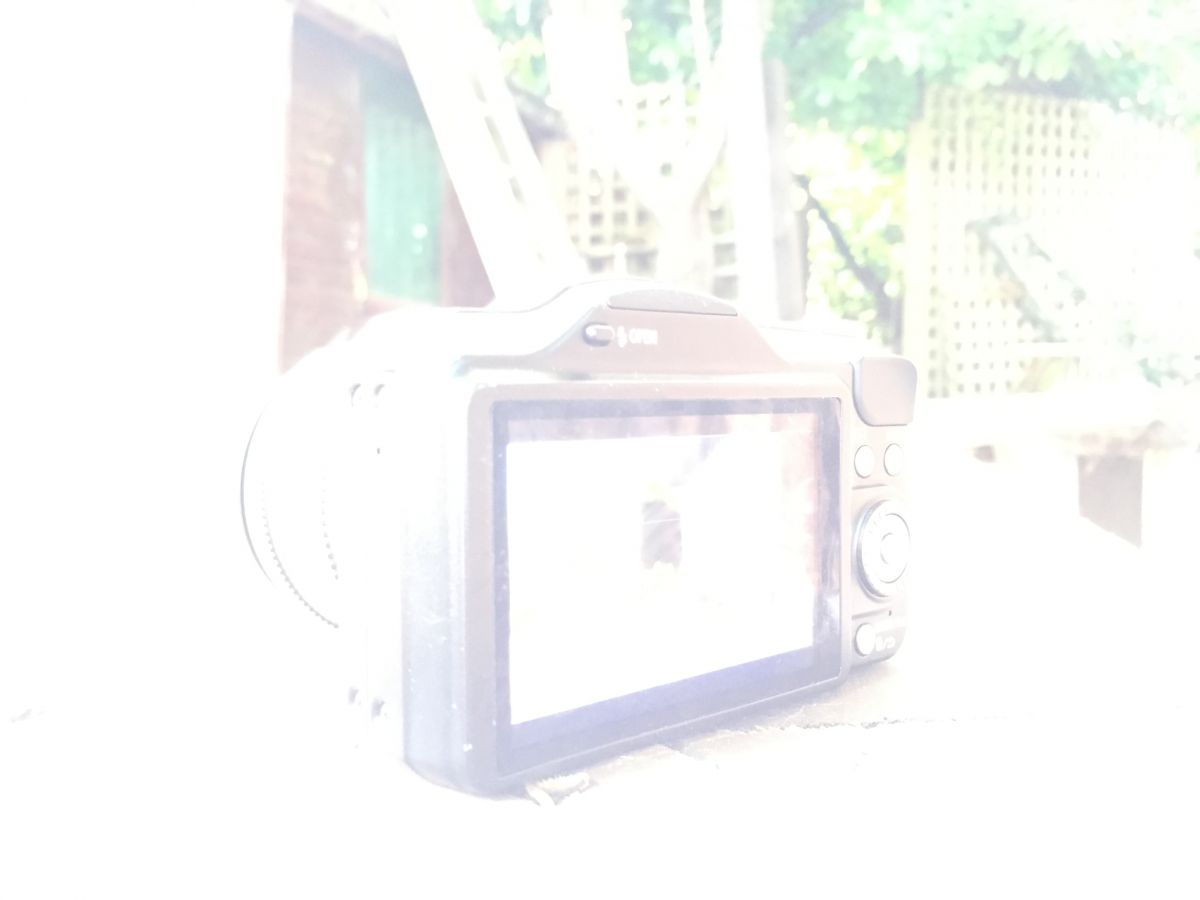

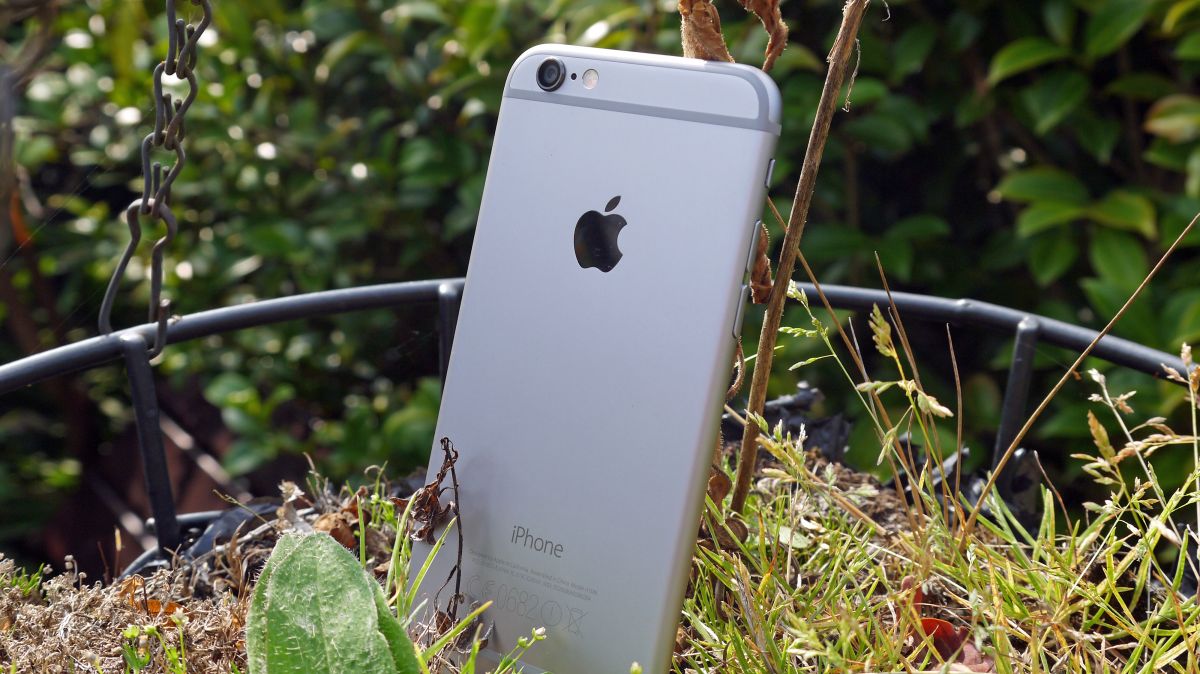


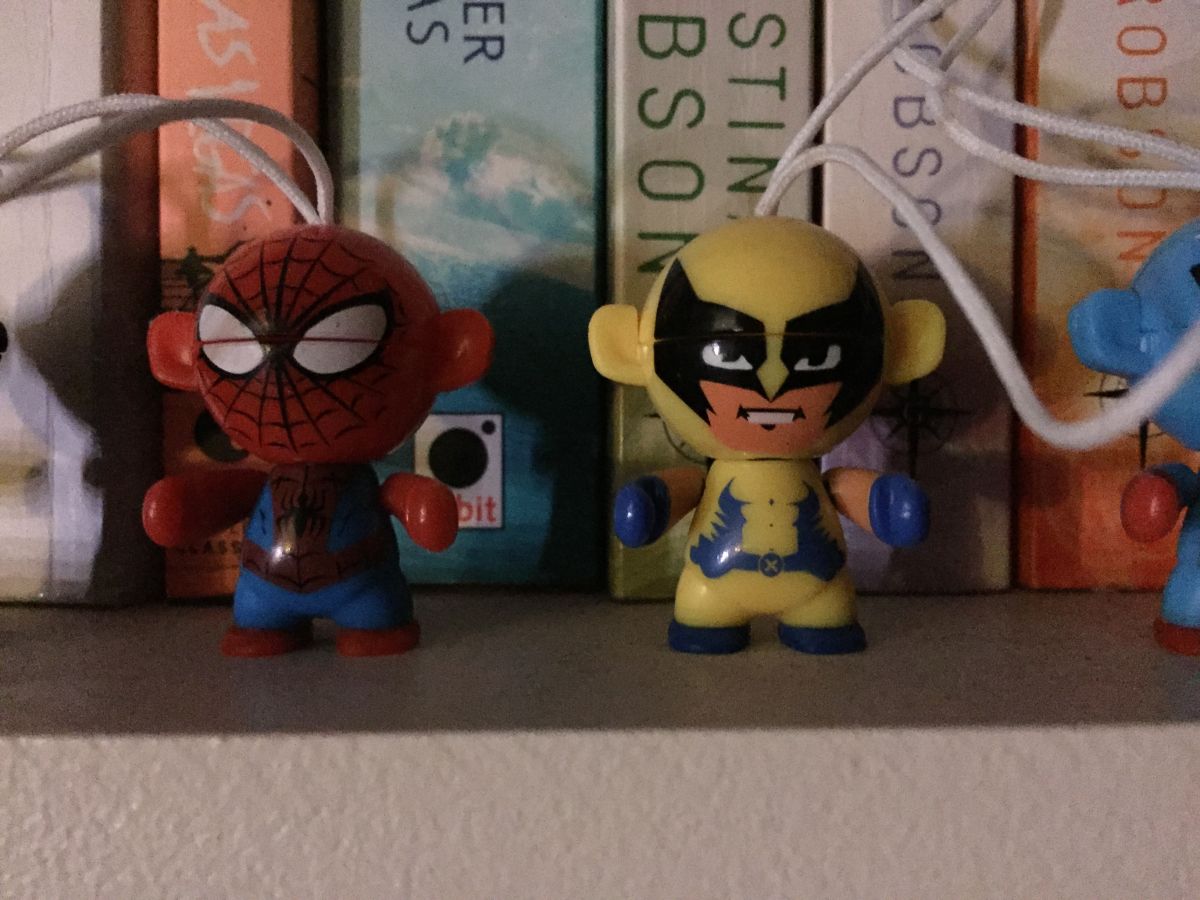
Gaming and media
Gaming on the iPhone 6 is a dream, thanks to the development of Metal. This feature was introduced in iOS 8, and it strips out some of the work needed between any game and the phone’s hardware to deliver more powerful graphics while taking less power from the device.
Apple’s been clever to offer its developers a stable platform to make games for, as it’s resulted in some very decent titles that look beautiful and play very well.
The increase in screen size might have been a worry for some at the time of the iPhone 6’s release, who feared their favourite games might not look as slick at the new, larger display sizes. But with the iPhone 6S now out and selling well, developers have long since switched to the new 4.7-inch size as the new default.
Even with those few who might not have made the switch (it’s telling that I can’t think of any massive examples), it’s no problem thanks to the upscaling provision.
One thing’s for sure: the iPhone 6’s A8 chip is still more than up to the task of driving modern games, and will remain so throughout 2016 and beyond. Indeed, Apple opted to use the chip in its latest Apple TV device, which is being positioned in part as a casual games console.

It’s an odd situation with gaming and power management though: Apple made a big song and dance at the time about the fact the iPhone 6’s processor could manage to keep going at optimum performance, although I didn’t particularly notice it was any better than the Android contingent when playing higher-power games.
What I did see was the battery performance falling away badly when gaming on the iPhone 6 – as noted above – which makes it less of a strong machine for extended sessions.
This wouldn’t have been an issue a few years ago, but now the mobile phone is the primary device for casual gaming and is a billion-dollar industry – so the iPhone should be able to hold its own if you want to spend the entire commute to work destroying alien scum and then use it as an actual phone the rest of the day,
Media
The iPhone as a media device is still one of the best out there in terms of consistency for music and movies, simply because Apple’s heritage from the iPod still pours through the iPhone.
There are some quibbles – the fact that most video formats are not supported will forever rankle, despite the fact that most are quickly becoming defunct – but overall it’s still one of the most well-equipped phones for entertainment on the go, thanks to the great media library available through iTunes.
Sound quality
The sound quality of the iPhone – providing you pair it with a better pair of buds than those you get in the box, which I still can’t even bring myself to use knowing they’re going to just fall out of my oversized and useless ears – is still one of my favourite things about the phone.
It’s not the best out there in terms of support – both the LG G4 and the Sony Xperia Z5 / Xperia Z5 Compact can play higher-res audio files, and the iPhone can’t, despite rumours Apple was about to add in 24-bit, 192KHz support – but when it comes to playback of your standard, CD-ripped or Spotify-downloaded tracks, there’s not much better to be had in terms of sound consistency.
The same can be said for video – the screen technology that debuted with the iPhone 6 and continued with the iPhone 6S is certainly an upgrade here, as the colours look richer and more vibrant than before.
Say what you want about Samsung’s Super AMOLED screens on the Galaxy S6, Note 4 and Tab S, but they’re very, very good at giving users the widest range of colours and deep contrasts, and Apple seems to be trying to ape that to some degree here.
The contrast ratio seems to be similar to the iPhone 5S – which was good already – which means the more atmospheric films are easy to watch in the dark scenes. The screen size is still a little on the small side, but only if you’ve seen or used a bigger phone regularly.
Otherwise, it’s perfectly acceptable as a way of watching the football in the kitchen, with the resolution just about sharp enough to see what’s going on clearly, when the other half is watching The Princess Bride in the living room despite promising she wouldn’t invite anyone round when the game was on.
The lock screen is also central to the media experience on the phone, with either on-board music or that streamed from Spotify given equal billing in terms of functionality. You can slide straight through tracks with ease, and with Control Center a pervasive option throughout the phone you’ve always got an easy way to change songs there too.
Many have attacked Apple for not going down the widget route in the past – me included – but many Android manufacturers are coming to the realisation that beyond music and a couple of other random apps, most just want to be able to change tunes rather than have an all-singing, all-dancing way of changing settings from the home screen.
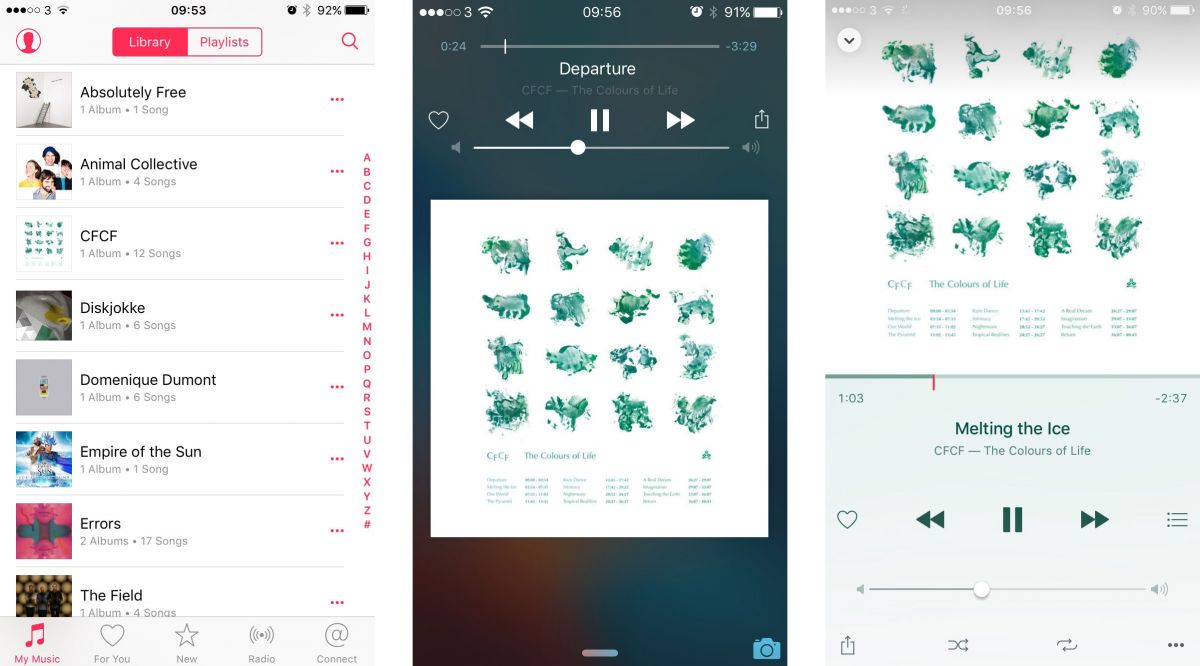
However, I would like to point out that Apple needs to improve the lock screen in some ways when it comes to music presentation, as the method of showing the album art is getting a little old now. When you look at the full-screen experience Android has baked in by default, you feel like that’s more futuristic; I hope Apple can do something soon to make this look a little more amazing.
And of course, let’s not forget the important point about how much stuff you can throw on there: the iPhone 6, like the 6 Plus, initially came in 16GB, 64GB and 128GB flavours, but the 128GB model has now been discontinued.
Given that nearly 4GB of storage is instantly given over to the OS (plus some loss for the GB vs Gb debate), the 16GB option isn’t really going to satisfy everyone over a few years’ use, especially when photos and videos start to mount up. So the 64GB, which is now the top-tier option, is really the one to go for.
I’m still slightly flabbergasted that Apple is charging so much to upgrade the memory in the devices. £80 / $100 / AU$130 for a 48GB jump? When it’s only £75 / $105 / AU$135 to buy a 128GB microSD card?
While I’m obliged to point out that it’s not as cut and dried as that (read our excellent feature on whether a microSD slot is really a good thing to find out more) there’s no doubt that the benefits of onboard storage are not worth the extra £80 you need to pay to jump between models. So why charge so much, Apple?
The essentials
We should never forget the bit that comes after the ‘i’. This is still a phone, no matter how much some people might consider it to be a top of the range internet-browsing tablet.
The iPhone is still a very capable device for phoning, although some features are still missing: smart dialling isn’t available from the dial pad, meaning you’ll constantly have to dive into the contacts menu unless you come to terms with the way the ‘favourites’ work in the Spotlight Search screen.
There’s also a slight issue with network connectivity: while it’s not a problem, the iPhone 6 isn’t as adept at holding a signal as other top-end smartphones (and while it’s no longer the top model, it’s still decidedly top-end). On various train journeys I noticed more dropouts than on some Android handsets, and in my notoriously poor-signal house the places I could receive calls were even fewer.
It’s nothing terrible, and I experienced no dropped calls during my time with the phone (bar one where I suspected it was the other person), but Apple still hasn’t made the best calling machine out there.
Messaging
When it comes to messaging, things are a lot, lot better. The current Apple keyboard, for instance, is one of my favourite upgrades on any phone ever, ever, ever.
This isn’t because it’s amazing, but more because I loathed the old board on the iPhone 5S so much, with its tiny, inaccurate space to peck into and the amount of times I accidentally hit above the letters and shut down the pad.
Now, with more screen to play with, there’s more space, more accuracy and the algorithms that predict words are so much better than before. If you’re one of those who never changes the keyboard on your phone (and if you’re a lifelong iPhone user, then you won’t have), then the inbuilt option is so much more accurate and consistent.
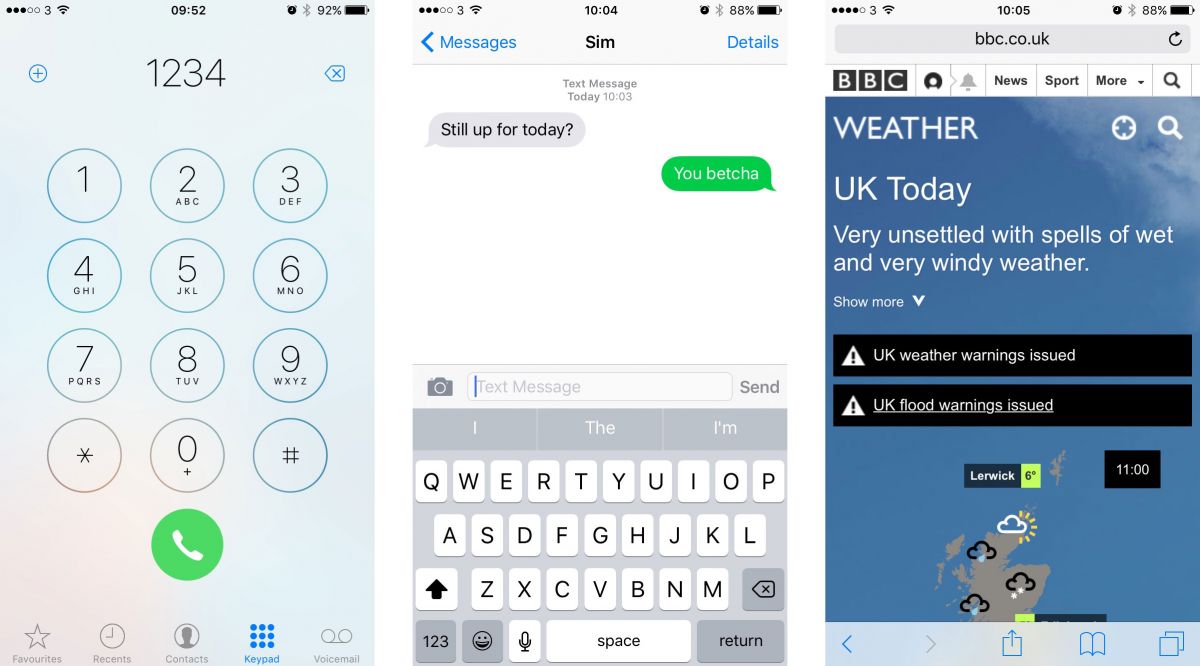
And that’s before considering the third-party options that Apple now allows. The now-Microsoft-owned SwiftKey is predictably awesome on iOS, as it always was on Android. But the truly remarkable thing is that Apple’s default option is more than fine.
YouTube : youtubeurl
The improved messaging experience through iMessage is good, but I still wish there was some more consistency in using the features to non-Apple devices. I like WhatsApp, but the fact that iMessage is now doing a lot of the same things built-in is favourable.
If only it could be installed on Android phones to make my life simpler when talking to others during iPhone use… that’s not too much to ask, right, Apple? Have a word with Google. Patch things up. I’m sure you can still be friends. After all, you can now get Apple Music on the Google Play Store.
Internet
The internet browsing experience on the iPhone 6 isn’t vastly different than before, although iOS 8 and iOS 9 have brought a few changes.
I really like being able to swipe back and forth to move through web pages (and this trick works on both Chrome and Safari, although with the former it lets you swipe through tabs, not pages) and with the default browser I liked getting a prompt when Reading Mode was available – it generally only seemed to pop up when I could use it effectively.
I always see the option to save articles for later and intend to use it more – yet I still go back to Pocket time and again. I can’t explain why, as it’s actually more convoluted, but the fact that Apple’s inbuilt system hasn’t lured me means it probably needs to be more prominent.
The competition
The iPhone 6 entered the market at a time when the rest of the competition not only already had its big players in place, a couple had even brought out iPhone-specific competitors in readiness. Then a new crop of 2015 heavyweights arrived, and duly impressed; what’s more, they’re now available for a price similar to that of a brand new iPhone 6, or even less.
So if you’re stuck between the iPhone 6 and the rest of the smartphone gang, here’s a frankly excellent round-up of how it compares to the other phones you might be quietly eyeing.
Samsung Galaxy S6

Samsung has long been seen as Apple’s main competitor and with the move to a premium design for the Galaxy S6 it’s a view that’s never been more justified.
A 5.1-inch 1440 x 2560 display leaves it both bigger and higher resolution than the iPhone 6 and it’s got an incredible 16MP camera, though Apple’s snapper is far from lacking.
For the first time ever on a Samsung handset the Galaxy S6 comes very close to the iPhone 6’s build quality too, with a metal frame and glass back that look and feel worthy of a flagship.
Samsung has even delivered a convincing alternative to Touch ID and neither the Galaxy S6 nor the iPhone 6 is lacking for power. The iPhone 6 arguably edges it for design, but the Galaxy S6 wins on specs.
HTC One M9
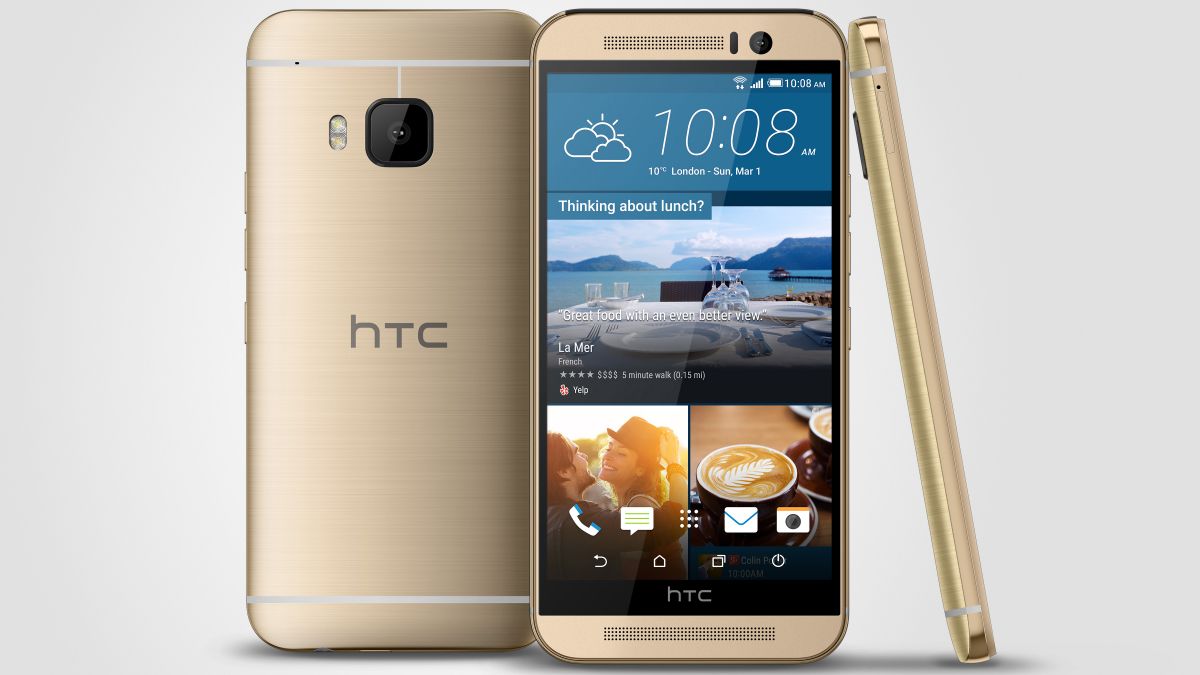
If any phone looks better than the iPhone 6 it’s the HTC One M9, a handset which is almost as much a work of art as a piece of tech.
A slick interface and a whole lot of power help it go blow for blow with the iPhone 6 as well and the two handsets have similar battery lives.
HTC’s upgraded the camera on its phone to a 20.7MP one, dwarfing the 8MP snapper on the iPhone 6, though megapixels aren’t everything and in practice both handsets should keep smartphone snappers happy, but the HTC One M9 does have Apple beat with its 4 UltraPixel front-facing camera.
Our biggest issue with the HTC One M9 is simply that it’s far too similar to the HTC One M8, but we’re not comparing it to the M8 here and judged purely as an iPhone 6 competitor it stands up well.
Sony Xperia Z5 / Z5 Compact

I’ve often been confused as to what Sony’s doing with launching so many flagship phones, but there’s no doubt that the Z5, and the Z5 Compact, are brilliant handsets that represent the best Sony has to offer.
Both are very similar; in fact, barring battery, screen size / res and price, they’re identical in functionality. Both have very powerful cameras that will suit the photographer who likes more power at their fingertips, and both have very clear and bright screens.
There’s also the fact both can offer Remote Play for a PS4 – it’s a unique proposition that will entice plenty of users, and while Apple’s got the lead in the mobile gaming market, this move will attract those that already have a PS4.
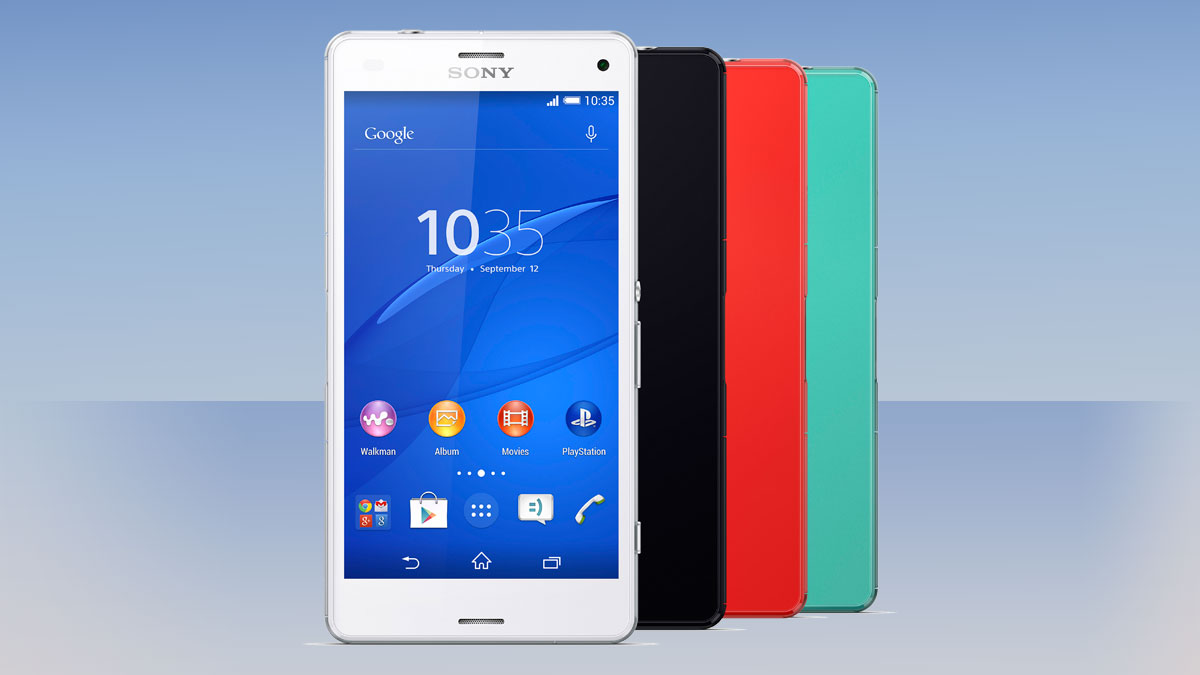
I’d argue that the Z5 Compact is the real iPhone 6 competitor here: it’s got a similar screen size (4.6-inch compared to the 4.7-inch of the iPhone 6) and a similar resolution too, while offering great specs to match (and beat) Apple in many ways, including expandable memory.
However, both the Z5 Compact and Z5 are cheaper than the iPhone 6 – with the former quite significantly so. If you’re looking for a smaller phone, I’d give that one a look along with the new iPhone. It’s a little more complicated to use, but very easy to learn and offers more raw power.
iPhone SE
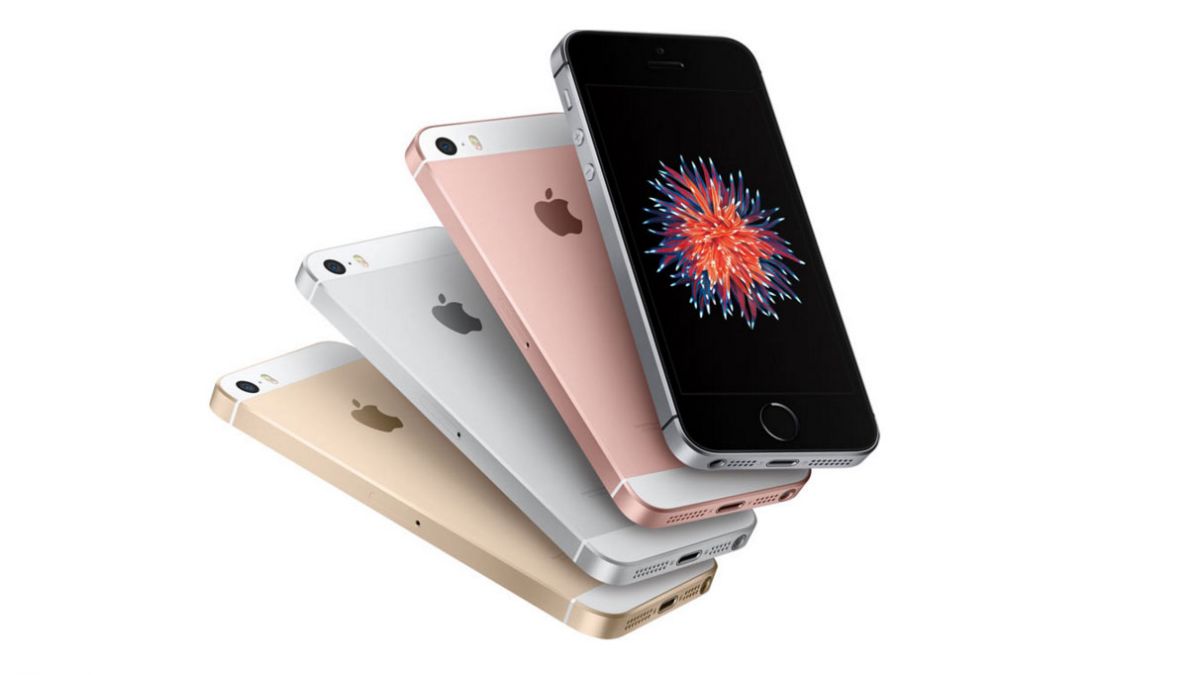
Its screen may be smaller at 4 inches, and its design my have been taken directly from the iPhone 5S, but on the inside the iPhone SE is a much better propsition than the iPhone 6.
That’s becuase the iPhone SE is packed with the same internals as the iPhone 6S, including its A9 processor and 12MP iSight camera. Then there’s the fact the SE is $150 (£100, AU$250) cheaper than the iPhone 6.
If you can cope without the extra 0.7 inches of screen the iPhone 6 affords, the iPhone SE gives you much better value for money.
Verdict
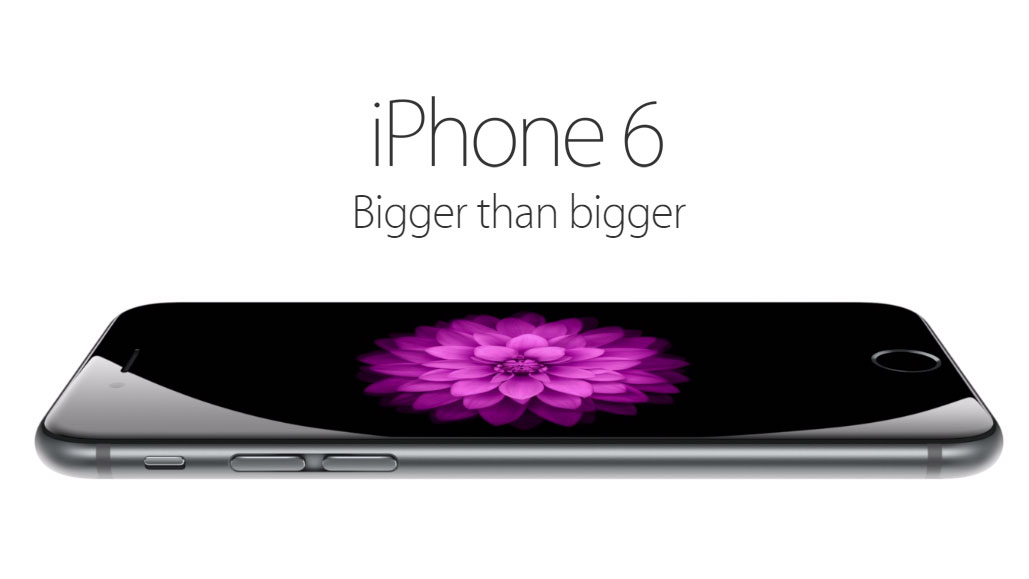
“Craftmanship. The perfect smartphone, with a perfect operating system, with elegant design. The best phone out there.”
That was the response of someone when I asked how they thought Tim Cook would answer the question “Why does the iPhone 6 cost so much more than the rest of the competitor phones?” around the time of the phone’s launch.
It’s still a question worth asking, given that the iPhone 6 continues to cost as much as many current Android flagships. I still feel that answer would be pretty close to the mark, though.
It’s a more in-depth answer than ‘the Apple logo on the back’, which a lot of people assume is the reason you’ve got to pay more for an iPhone. That answer would explain why Apple thinks it can charge more for the phone, but doesn’t go any way to explaining what it is that makes it feel the need to keep the price so high.
In fact, price is the main thing that plays on my mind whenever I use the iPhone 6 these days. Is this mid-range phone still worth such a high price?
However, before I give my thoughts on that, let’s first take a look at what makes this phone special: an improved design, a better camera, and an upgraded battery compared to its predecessor.
A faster CPU, better graphical power, stronger health sensors and a slicker and more intuitive UI. The iPhone 6 represents Apple’s last big jump in smartphone design, and one that makes this a very impressive phone indeed.
But is that worth the extra money?
We liked
A lot of people still think it’s acceptable to compare phones based on a spec sheet. It’s not. It’s about the experience, the relationship one has with a phone day after day, and that’s something Apple has nailed year after year: the feeling you get when you first pick one up.
The design of the iPhone 6 is brilliant. It feels like a potted down version of the iPad Air, which itself was one of the best-designed bits of tech I’ve ever held. I’m not a fan of the plastic strips on the top and bottom of the phone – I’d have preferred these to be blocks of colour – but that aside, it feels great in the palm. And it’s a design that remains relevant through the iPhone 6S.
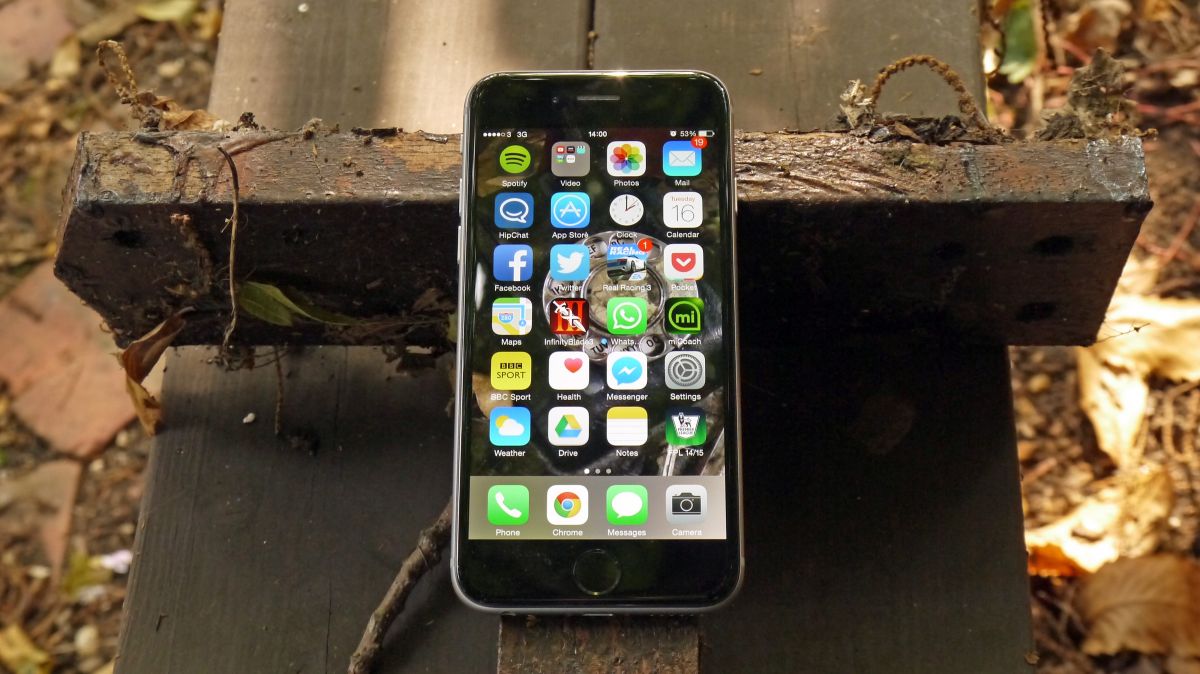
The battery life upgrade is a real plus too. Yes, it falls a little under hard use, not to mention after more than a year of working, but the main problem with the 5S was the fact the phone would be useless by the end of the working day even when not put under a lot of strain; that problem seems to have been resolved.
The camera quietly impresses, and the new modes are helpful at times, if not always useful. While it irritates that there’s no 16:9 mode for snapping, the results are still almost always something I’d want to share.
We disliked
The iPhone 6 is still a sensational handset, but not flawless. There are two issues that have to be raised.
The first is the screen. It’s a tricky one, as it could sound like I’m being rather hypocritical given my point about not basing a feeling about a phone on a spec sheet.
But the lower-res screen is noticeable next to most other Full HD phones in the iPhone 6’s class. Sure, day to day you won’t notice the fuzzier text, the slightly rougher pictures; but given that you’ll be paying more for a new iPhone 6 than for many newer Android flagships, I can’t condone Apple not working out a way to get a Full HD display on this phone.
It’s not like it’s new technology either: the HTC One M7 had a similarly sized display back in 2013 and it was Full HD. It looked great back then, so why has Apple not managed the same thing now?
I can’t think it’s to do with battery life, but if it is, then the phone should have been made thicker; 6.9mm with the rounded back feels nice in the hand, but a mm or two thicker wouldn’t have gone amiss if the thing I was looking at had a better display – after all, Apple did just that to squeeze in the iPhone 6S’s arguably superfluous 3D Touch feature.

And secondly, there’s the issue of price. Again. The Apple iPhone 6 is still too expensive for me, even after the post-iPhone 6S price cut.
Every year I get to this point in the review of that year’s iPhone and wonder: “Am I’m missing something? Should I be giving the iPhone a pass while castigating Android or Windows Phones for the same thing?”
But I still can’t find a tangible reason for the extra cost. We’re not talking a single pound / dollar or two; it’s a big difference in price on contract. The materials used are premium, yes, but they’re not necessarily making the best design out there.
The iCloud drive stuff is good, the operating system is sleek, but there’s nothing here (beyond the phone being a very good all-rounder) that gives me a quick answer when someone asks me “Why is the iPhone more expensive?”
To me, that’s a problem – and one I can’t just ignore because ‘people’ will pay it. Were there nothing else wrong here, then perhaps it could be glossed over, giving the choice to the buyer, but as the phone isn’t – and wasn’t – market-leading in a number of ways, the price rankles heavily.
Verdict
When I first picked up the iPhone 6 I thought this was going to be a hard review to write. Had Apple just changed the shape but kept the same inherent problems? Was there actually enough new stuff to make it a phone that really helped the company leap forward?
The answer is: the Apple iPhone 6 is a brilliant phone. Its release marked the first time I’d even considered using an iPhone as my daily device, thanks to the larger screen, better keyboard and, most importantly, the upgraded battery life.
However, the price is still off-putting and the screen, while perfectly fine (and sometimes impressive) in day to day use will still irritate me, knowing that I’ve not got the best experience for my money.
But that’s the only bugbear I have with the Apple iPhone 6. It still feels amazing in the hand. Apple has somehow made a phone too thin (even for Apple to top) and turned it into a positive. The operating system is smarter and more intuitive than ever, and that’s without even factoring in the strong ecosystem of apps and media that Apple users get.
So while the iPhone 6 might not be the most powerful, most attractive, best at photography or best for battery life, Apple has put it all together in a way that, if you can forgive the persistently high price (and that’s a big if), offers a phone that should still be at the sharp end of your consideration for your next smartphone if you’re not willing to splash out £500-plus.
Source: techradar.com










































Let me say just this :
Iphone is the last smartphone on my list.
Moving the power button was the stupidest thing I have ever seen. If you're left handed, its on the wrong side. and when I hold the phone in my left palm and reach across from behind to press the power button, all I do is hit the damn volume up and down buttons. So I end up having to use the right hand to hit the button. At least when it was on the top, you could just press down and the button wasn't fighting with something across from it. Stupid idea for an overpriced phone.
yep!
We just purchased the
IPHONE 6 a month ago and it is already bent, Apple says that it will not
replace it due to it being "accidental damage". Beware of these
phones, we had it in an otter box from the time of purchase and the phone still
bent….
Please don't take it hard my friend's.
The iphone 6 is like cat: NOT USFUL…
Thank you.
lol
I love the gold!
For the external button part mentioned, I cannot agree more.
I do find, after around 6 months of ownership, my android based phones s5, alpha, A5, note 3, all become a bit slower, not sure why. Never really had an iphone for that long so cannot tell. But I hear the IOS is really optimised for the specs of the handset, even with 1gb of ram, it will not slow down faster than say, the HTC one m9? I'm no expert, just talking from personal usage.
"Screen too low-res"?? It's 326dpi… that's higher res than any magazine.
Yes, there are other phones out there with higher, but a retina display is anything but low-res.
I gave Android a fair chance (6 months using an Xperia Z3), but it nowhere near as smooth or intuitive. Felt like stepping back in time, IOS is much better. I got fed up of crap Android notifications (I seem to miss a lot of whatsapps, messages and calls I never did on my 4s), apps that crash, unresponsive keys. All on a phone that is more that capable of running Android well. I ended mu spending nearly £600 on an iPhone, and I am not going back to Android. I'd rather have a windows phone, it is more reliable.
your rung
Nice review, Gareth. Here I have a comparison video for the iPhone 6 and my Oukitel k6000 pro, maybe you will love it: https://www.youtube.com/watch?…
??
Tossing it. It is too big, I can't make it work in one hand and doesn't fit in my pocket. Why don't they make two sizes…one for women and one for men? Men have an inch larger hand most of the time and that makes a differences. Unless, they are pushing for women to evolve big – manly hands.
Dude u have said that 3 time already!
the iPhone 6 rocks its better then the s6…and the m8
All cameras in the Samsungs, iPhones are toys compared to the Panasonic LUMIX CM1 a 20MP 1" sensor, 4K video, able to use screw in adapters for filter system like Lee Seven5.
Throwing it on the floor doesn't warrant a free repair. Do Samsung or any other phone manufacturer offer free replacement for such carelessness without insurance?
The "i" in iphone and all the other "i" products is referring to one's self. As in Me, Myself, i
The "i" refers to the owner, one's self, selfishness, narcissism.
Proof, every single iphone and "i" product owner, the most selfish people in the world.
Correction: people are paid to camp outside Apple's headquarters for days on end – to ensure that news crews have someone to interview as they attempt to pad out their news stories on the release of the new iPhone. Personally, once I became a fan of Apple's laptops (and they are wonderful) the iPhone became a default choice of handset. I think they're fine and do everything I need of them. Expensive, yes. Worth it? More or less.
I thought it was a good review balanced and fair — you can buy whatever phone you want and looking at the comments below most people there are not apple fans but rather fanatical about their own makes. Its just a phone !!!
It's really not that big Tara, the 6+ I found too large. Even larger, than the NOTE 3, but the 4.7 inch screen is a decent size, you'll get used to it. Just stop buying stupid jeans with no pockets lol
Don't ever get replacement iPhone from Apple. Bought a new iPhone6 on
Dec 2014 and dropped in water. Went to this apple store and they
replaced the phone with a brand new iPhone6 for 299$.
After 2
days it got switched off and when I took it to the store, they are
saying that the phone is opened and tampered. Why I have to open a 2
days old phone to screw myself.
I just escalated this thru Apple
care and they agreed to reinspect the phone in different store, but the
result is same. Each and every technicians are saying different answers
if I ask what kind of tampering is done.
I am damn sure that not
me or someone else opened this phone. The only possible cause is the
phone I got is already tampered or the store guys did something when I
took the phone for service.
Samsung knew the Apple iPhone 6 was Very Succesful,as they made there New smartphone copy the Full Body of the iPhone 6 with the Galaxy S6,and even copied Apple with it Price Range as Well,Why?did take Apple so long to Realise that the Bigger the Screen on Smartphones they more Popular they become,plus the Screen this time Matches the Length on the Height,as the iPhone 5 or 5s was Tall but not Wide Enough